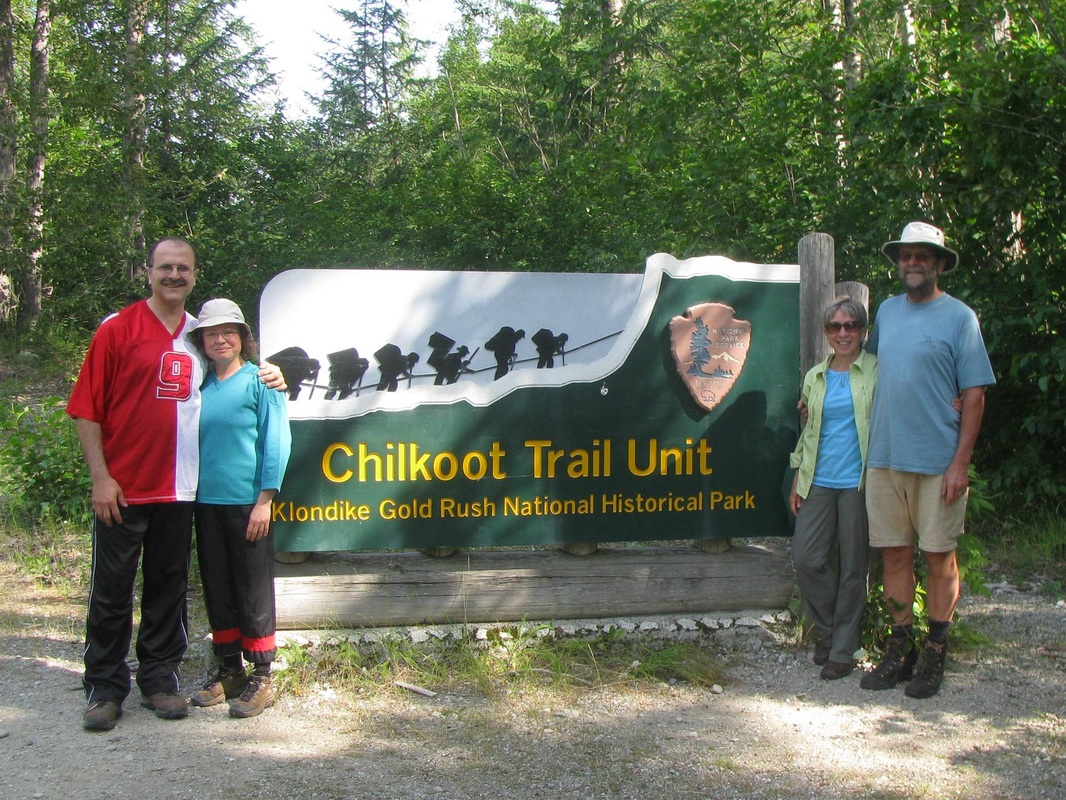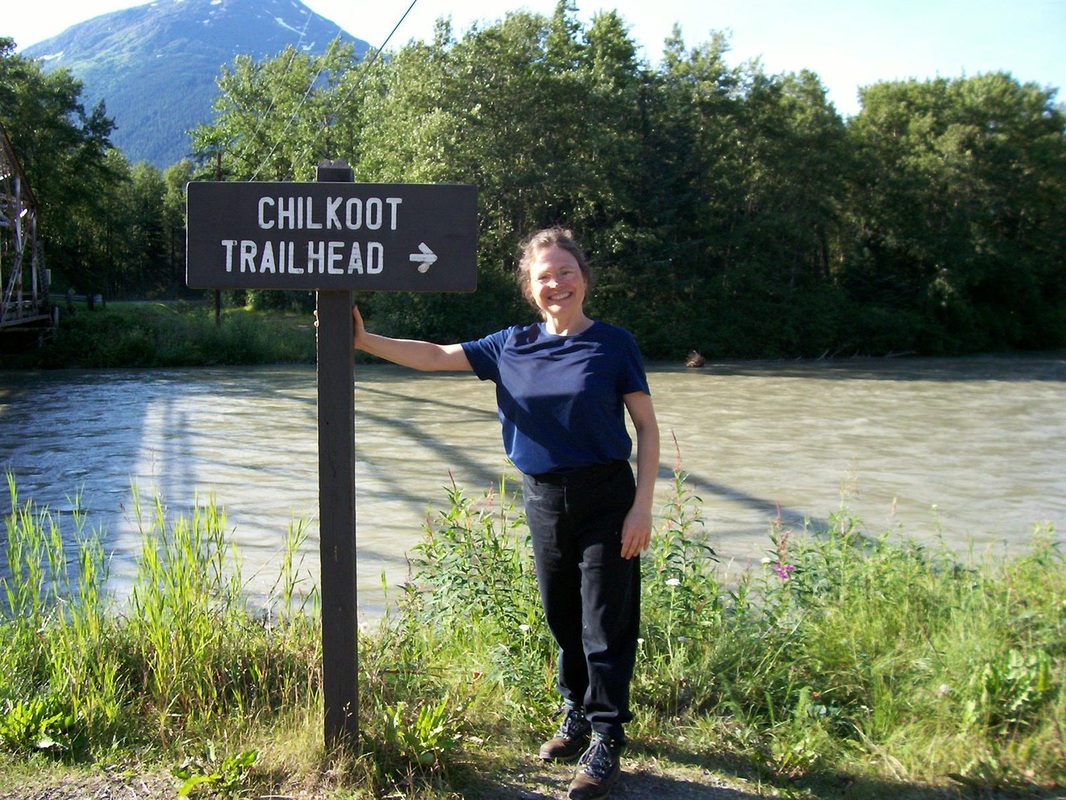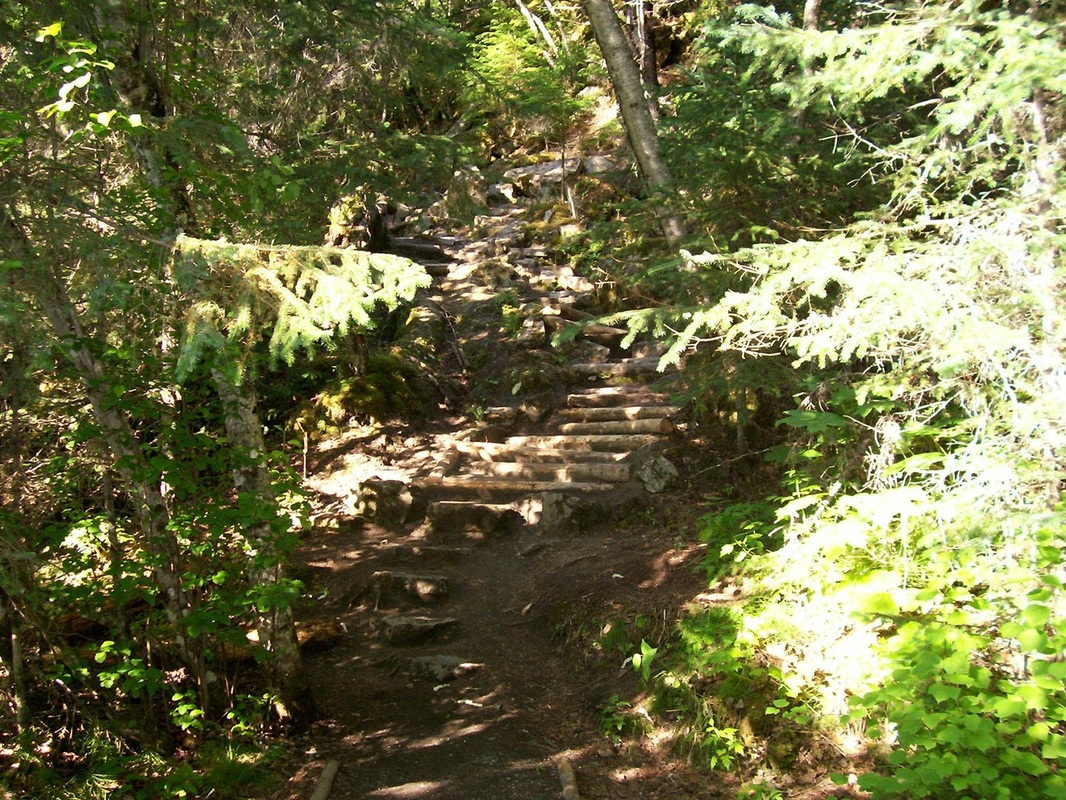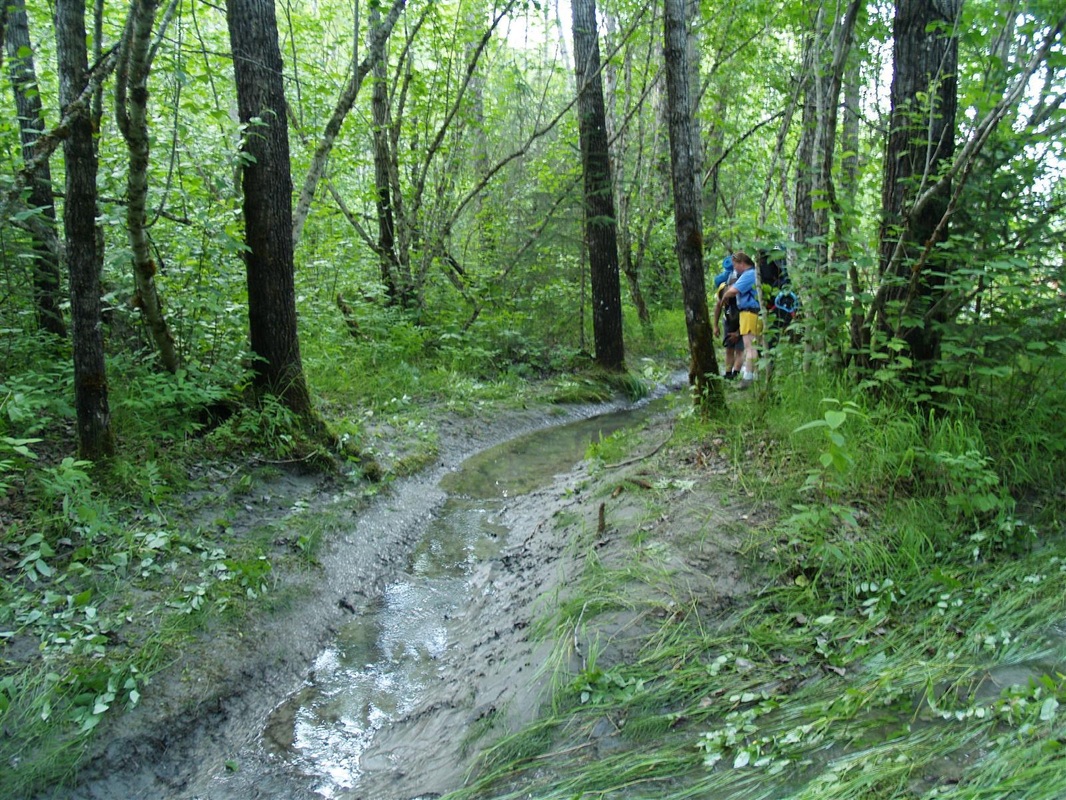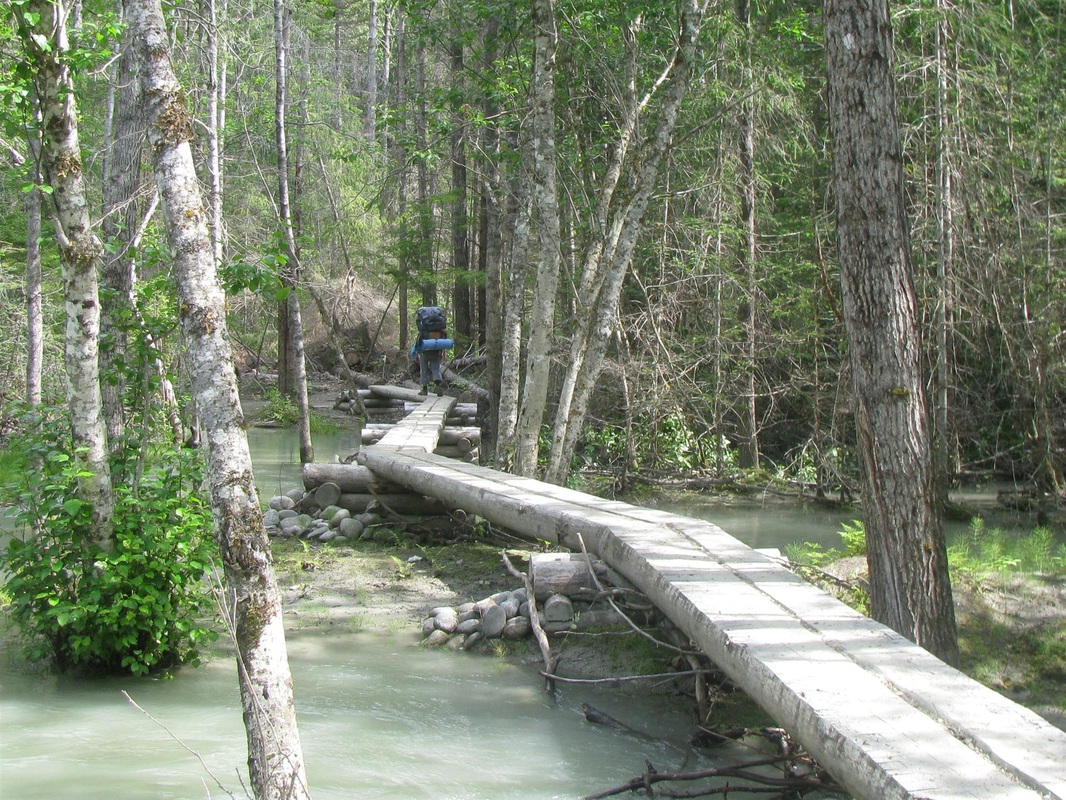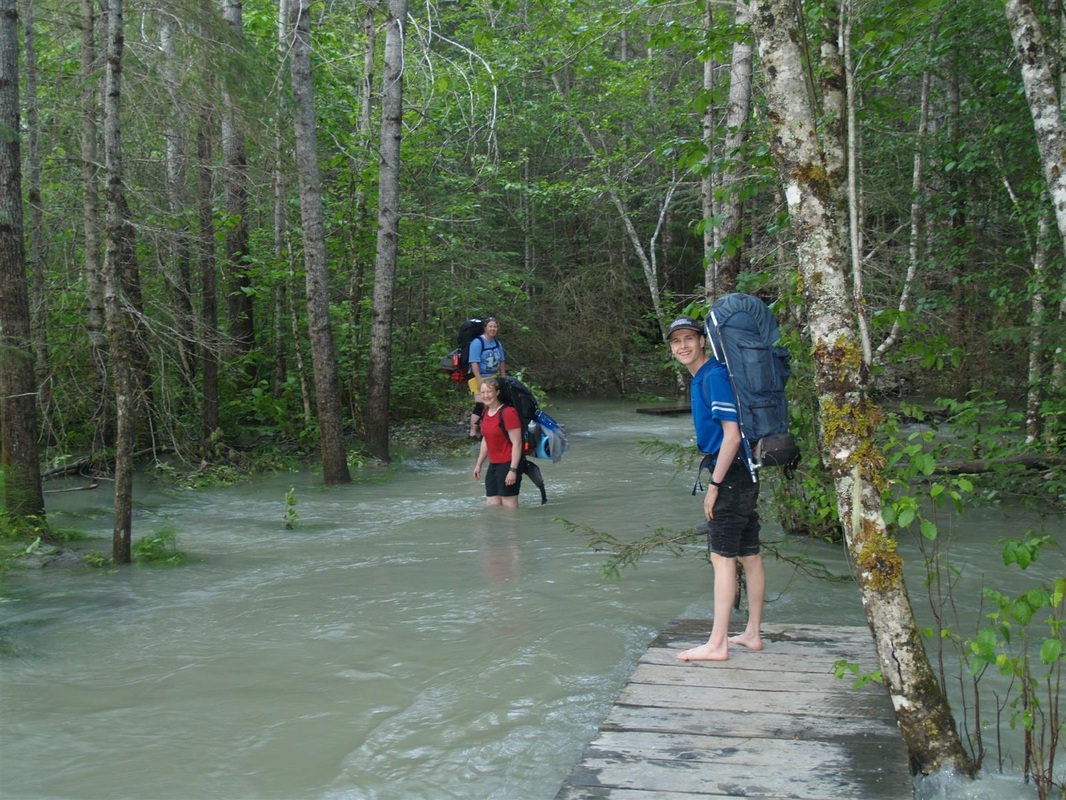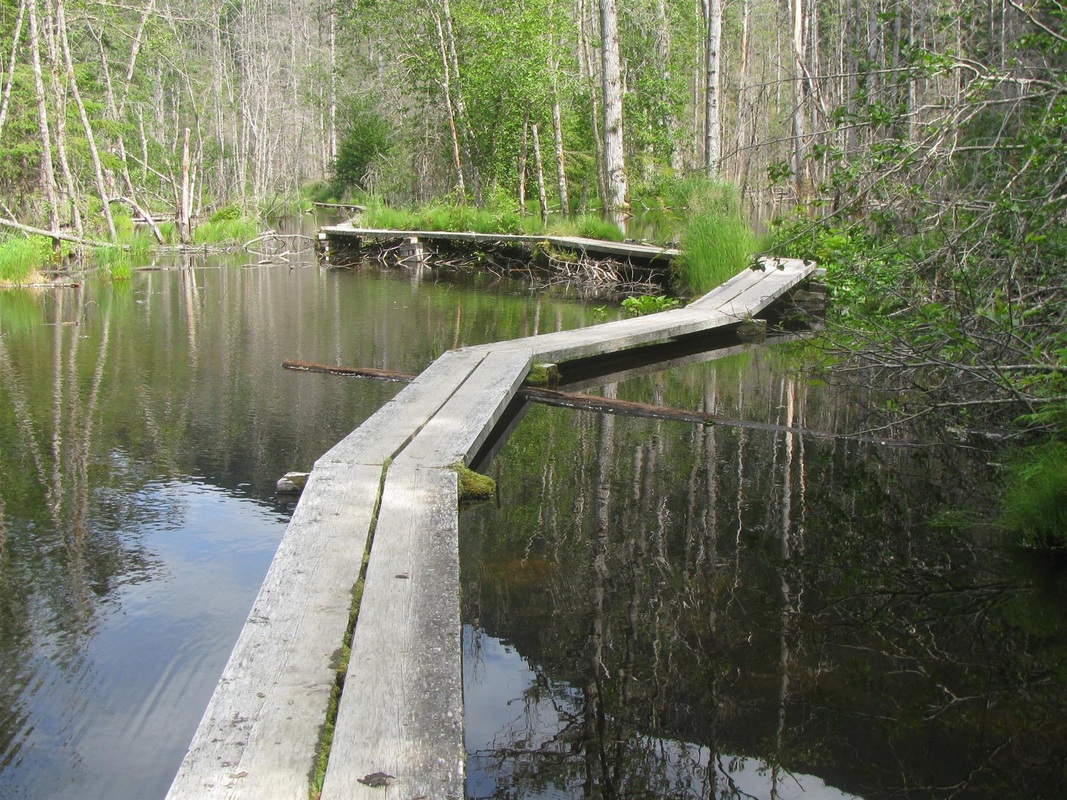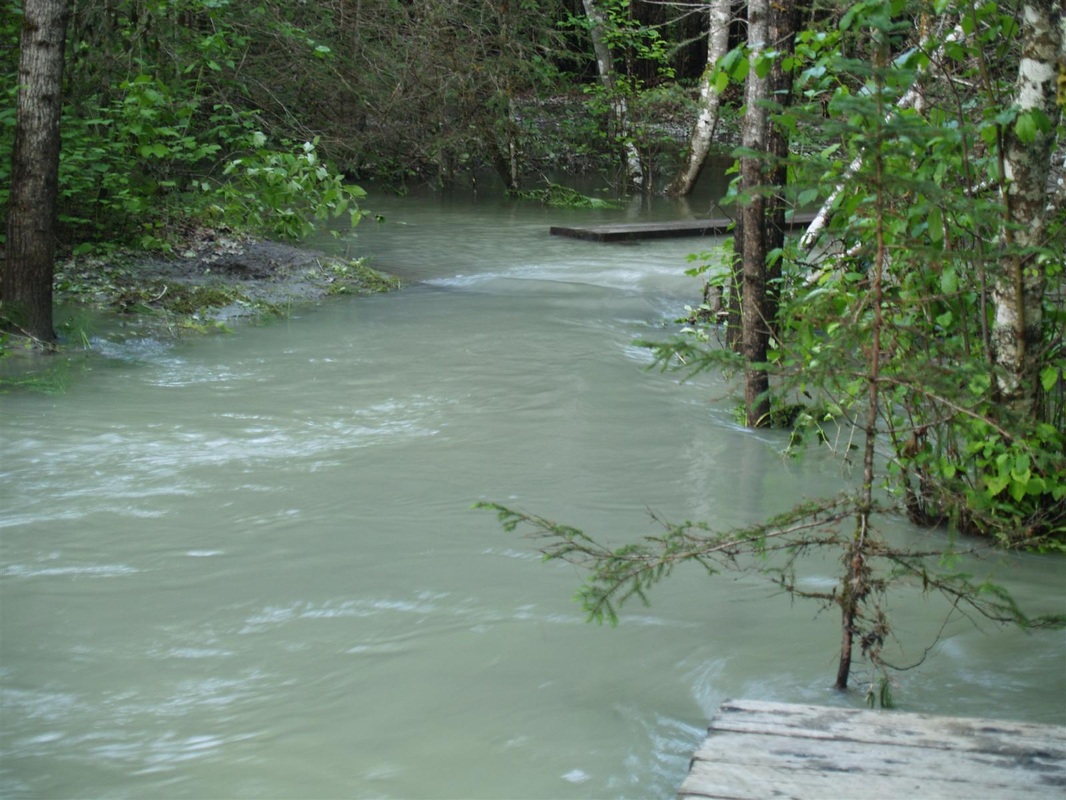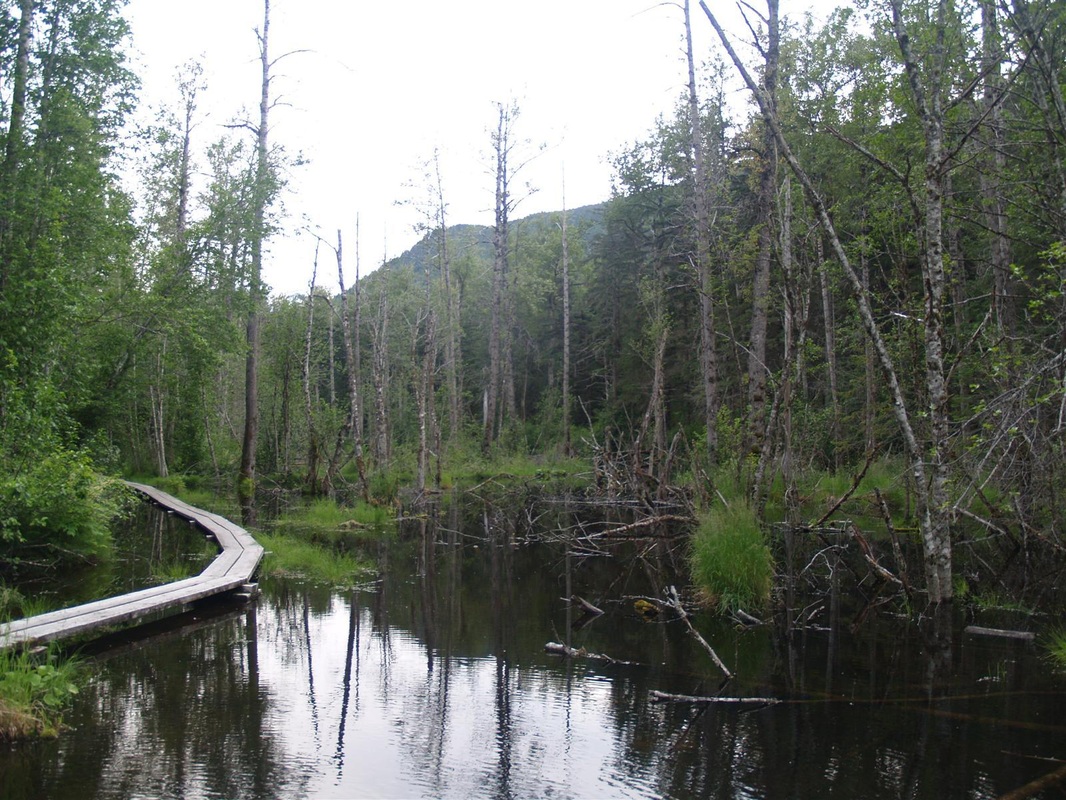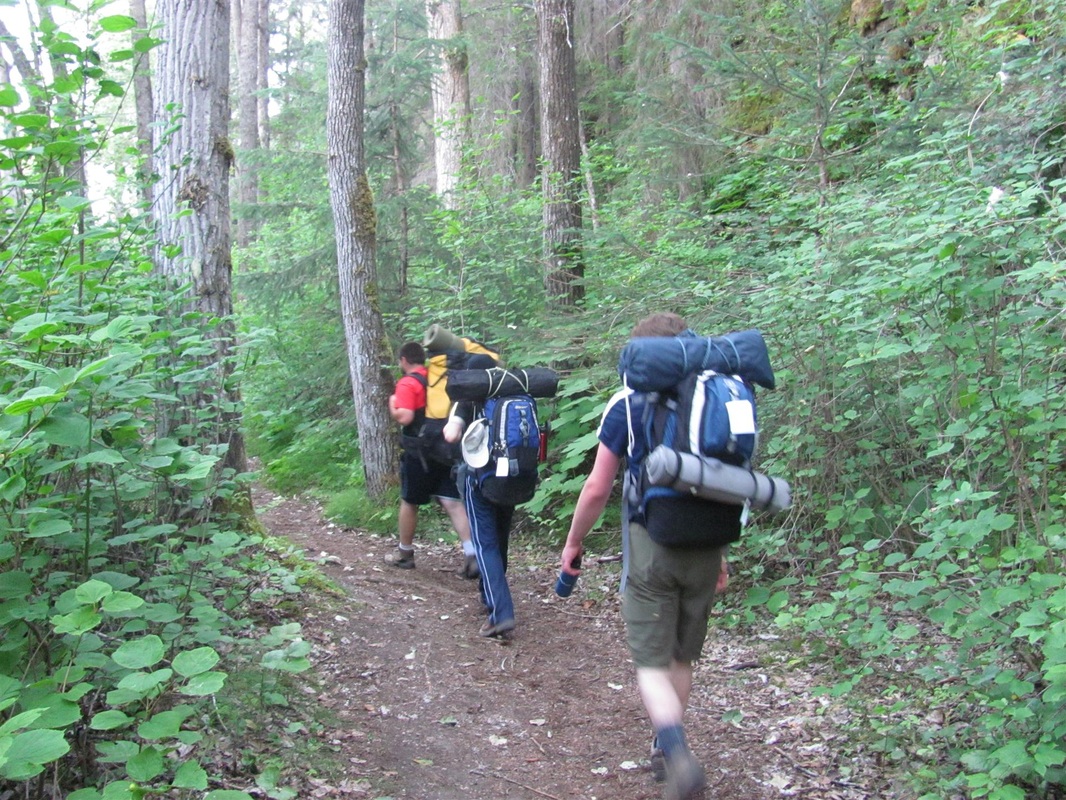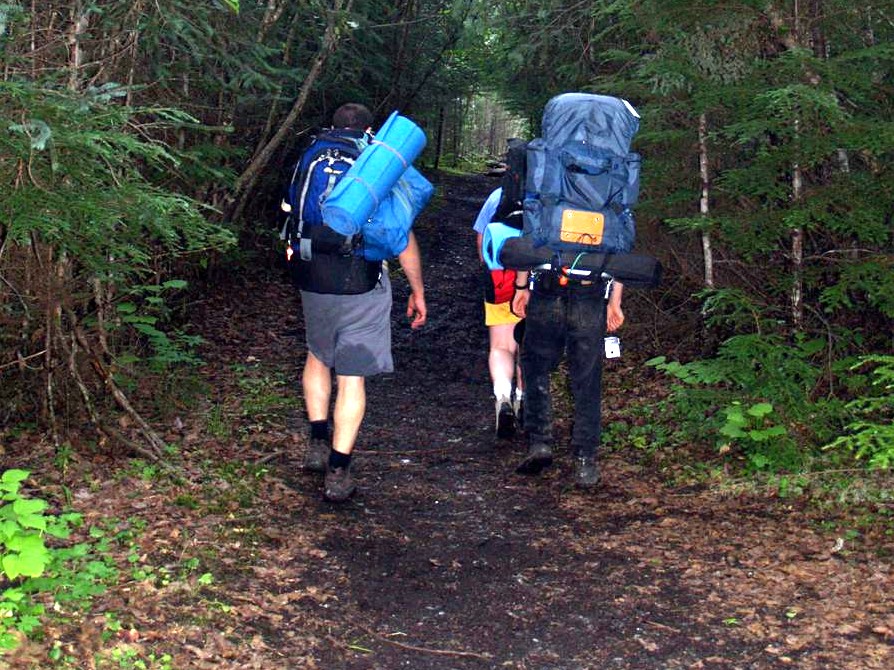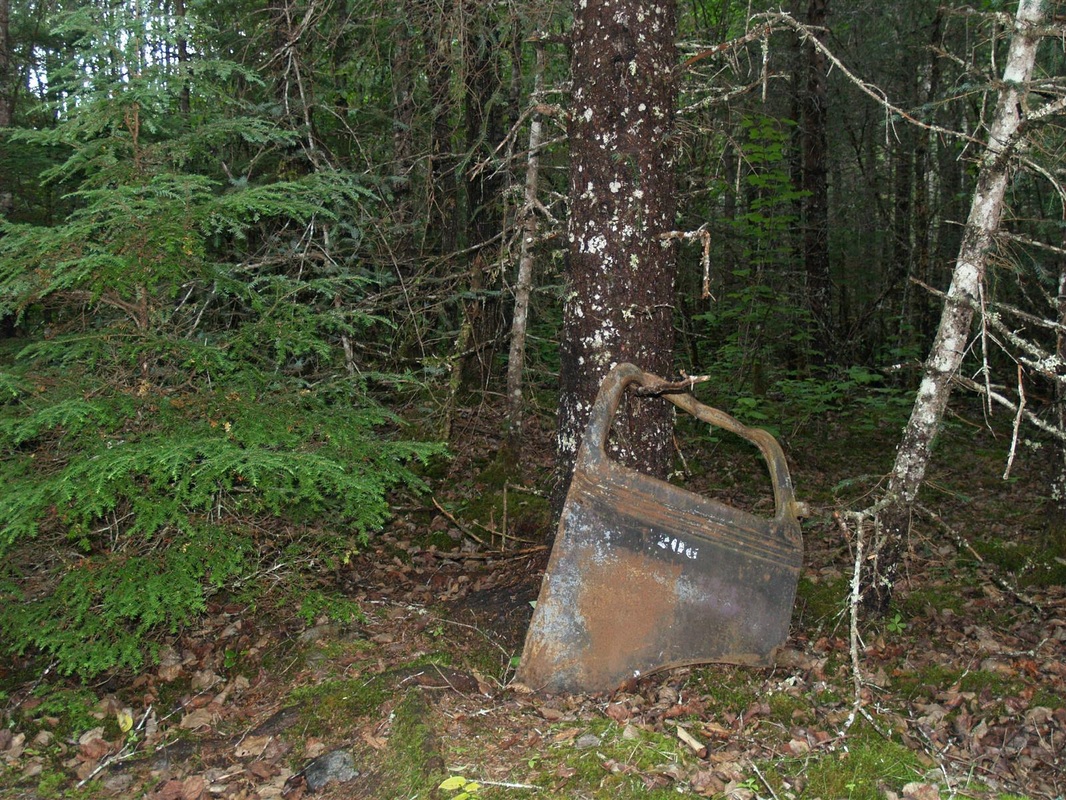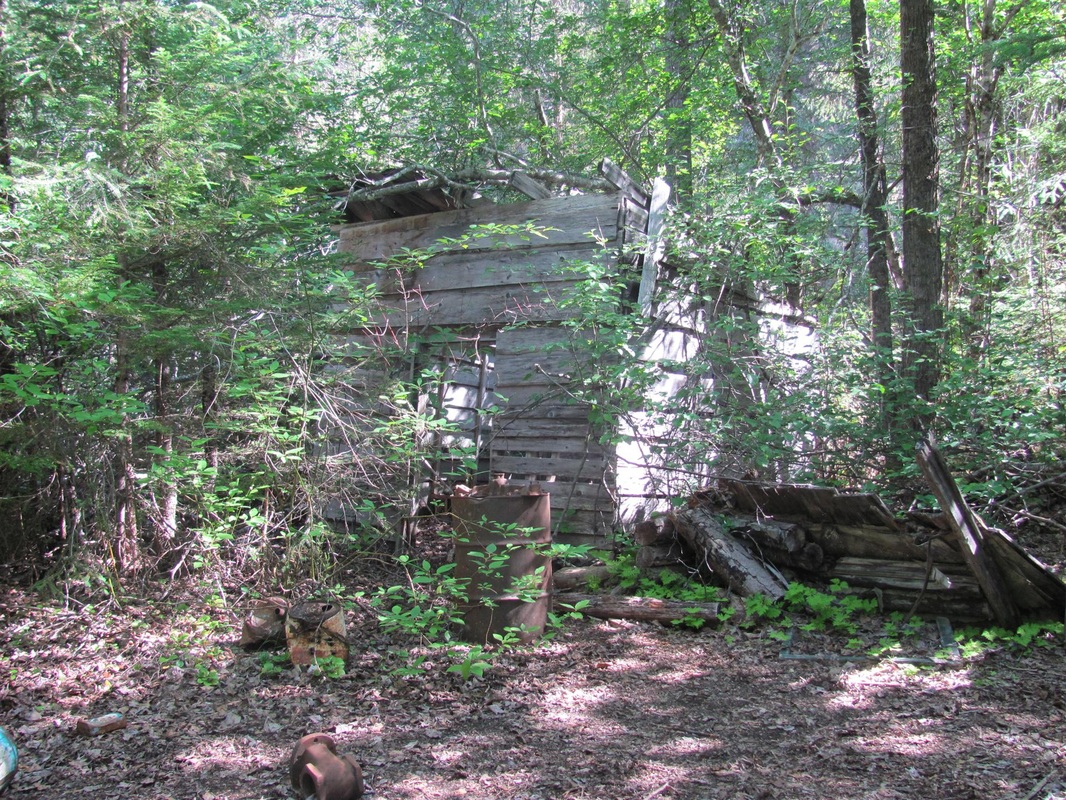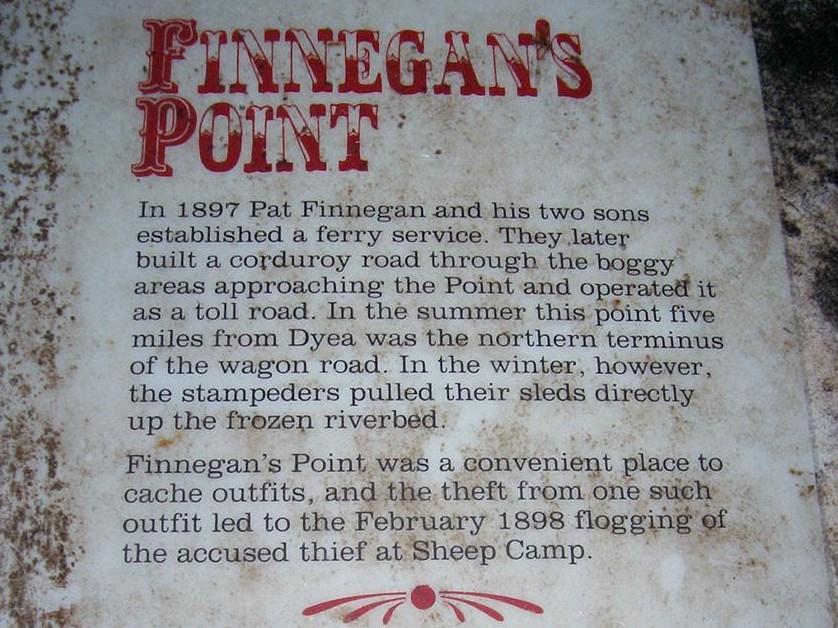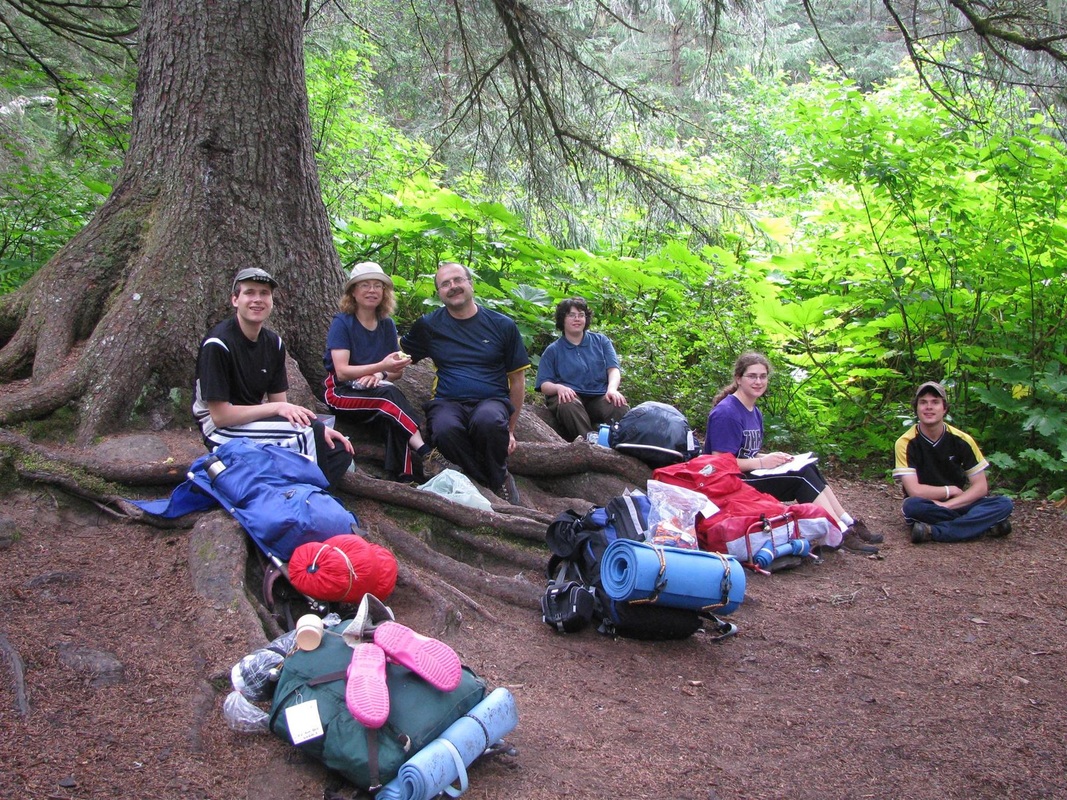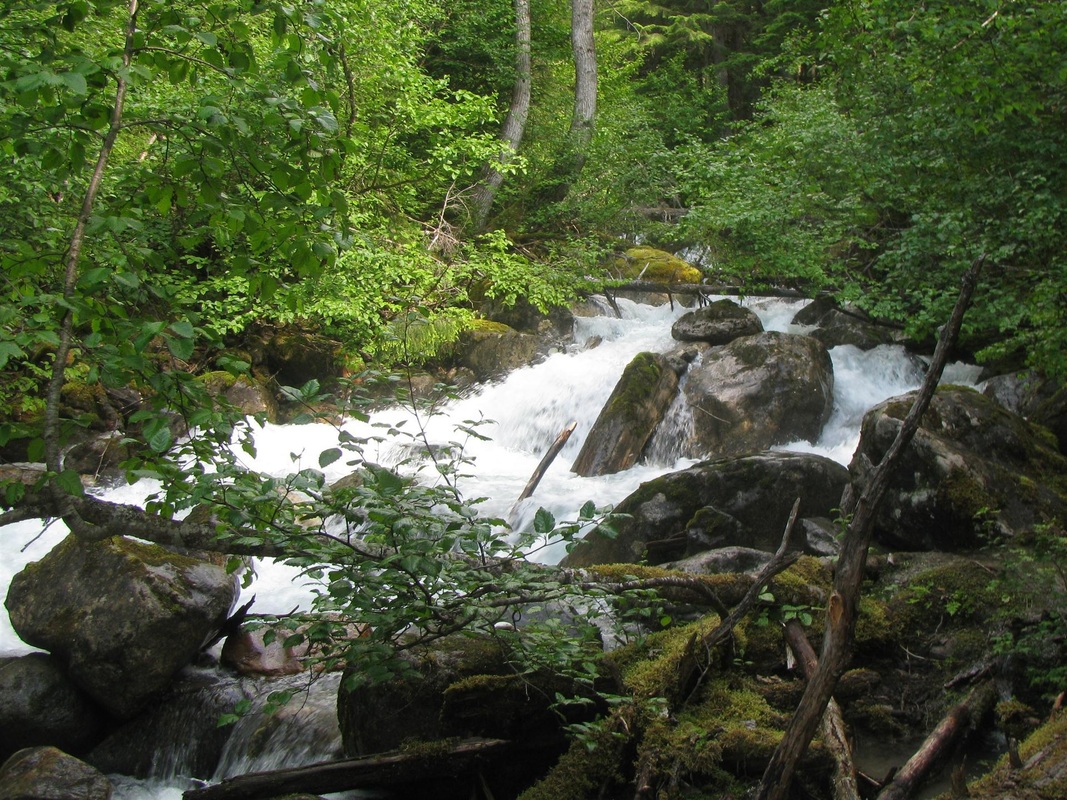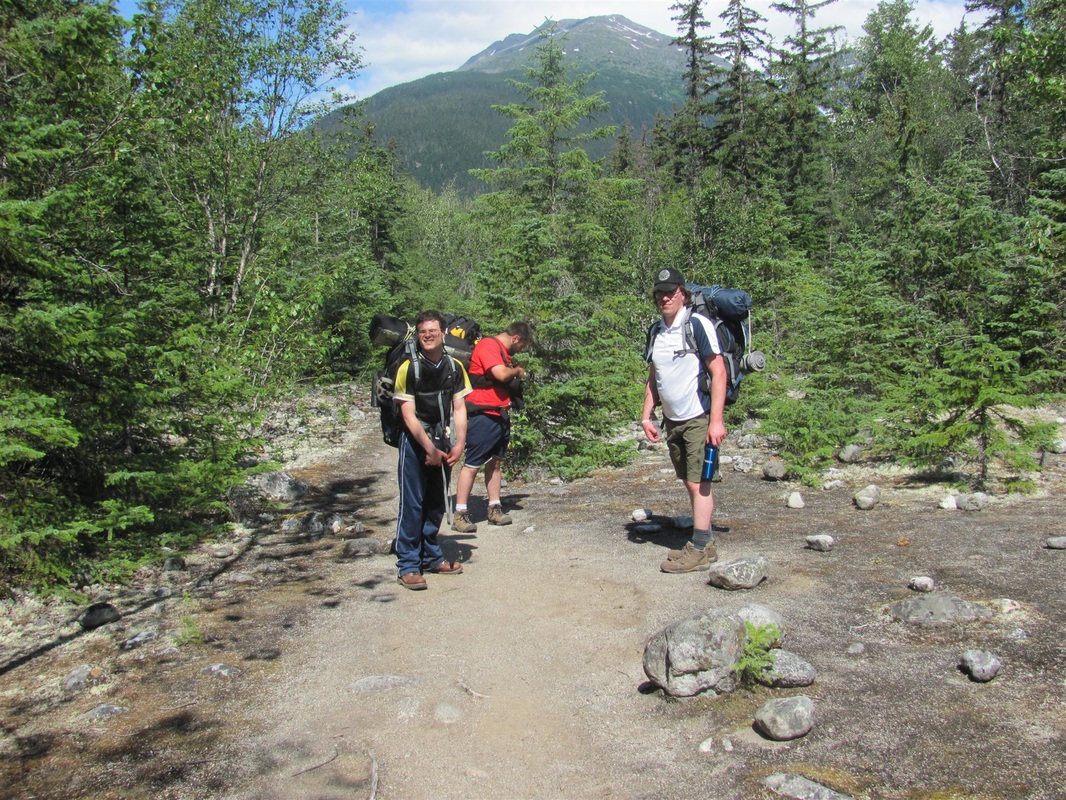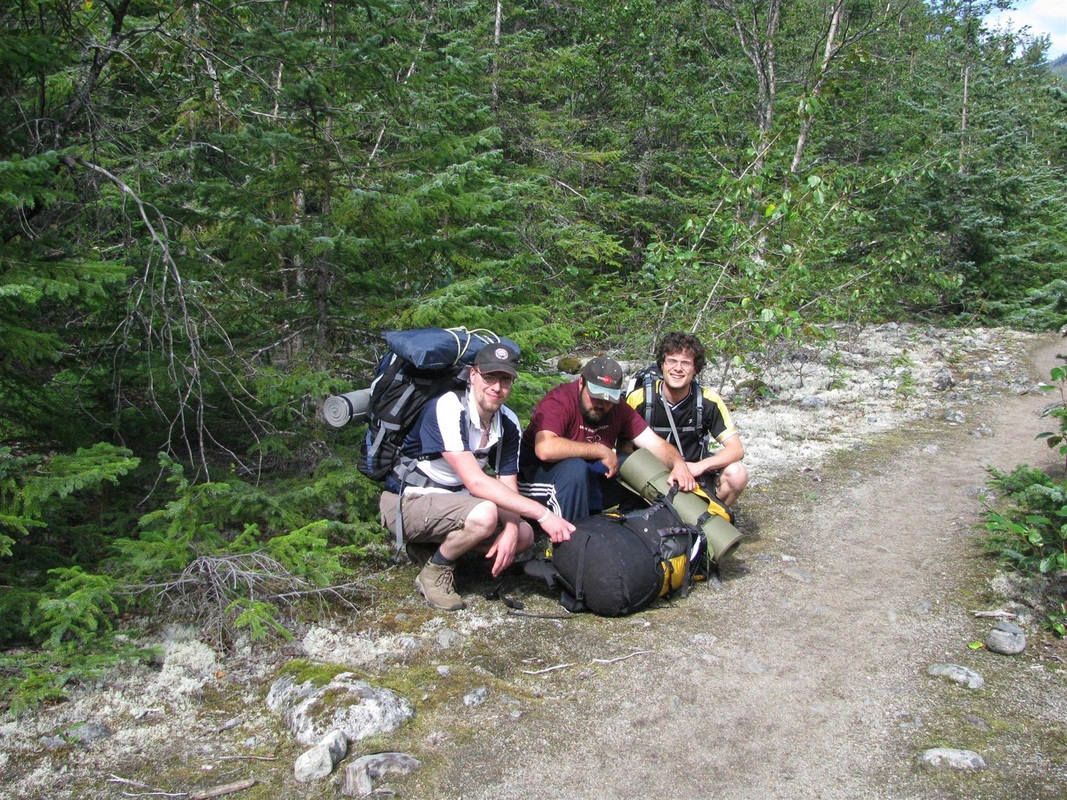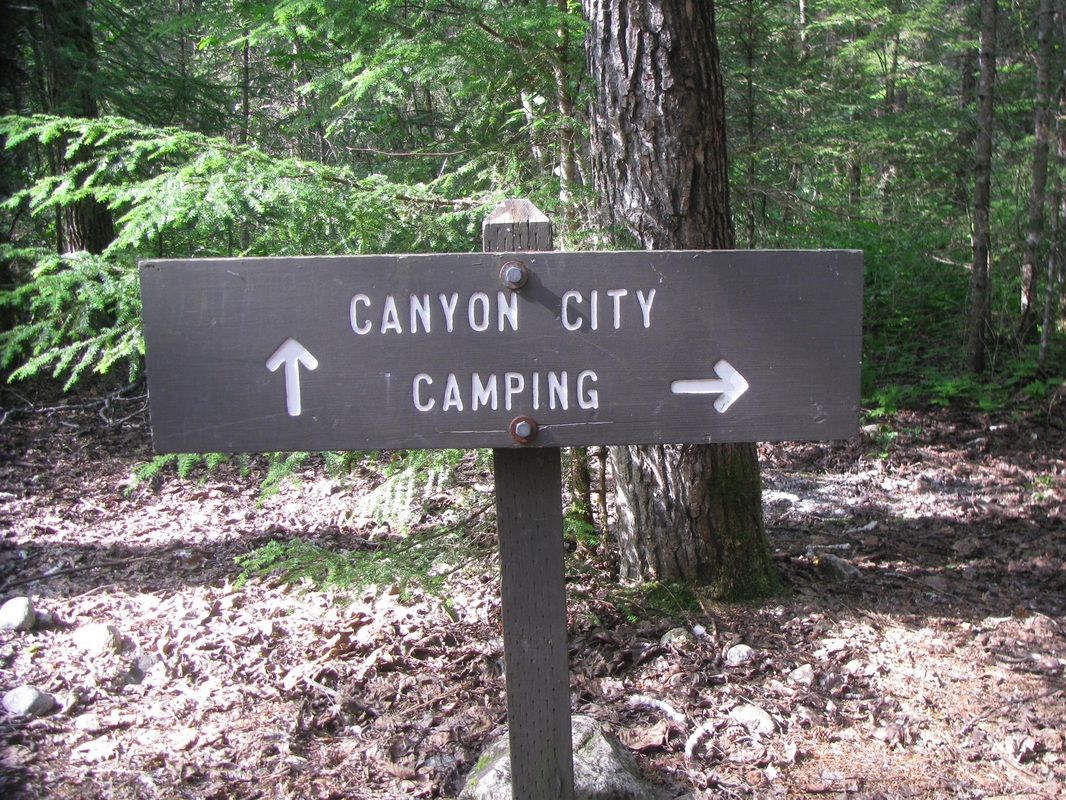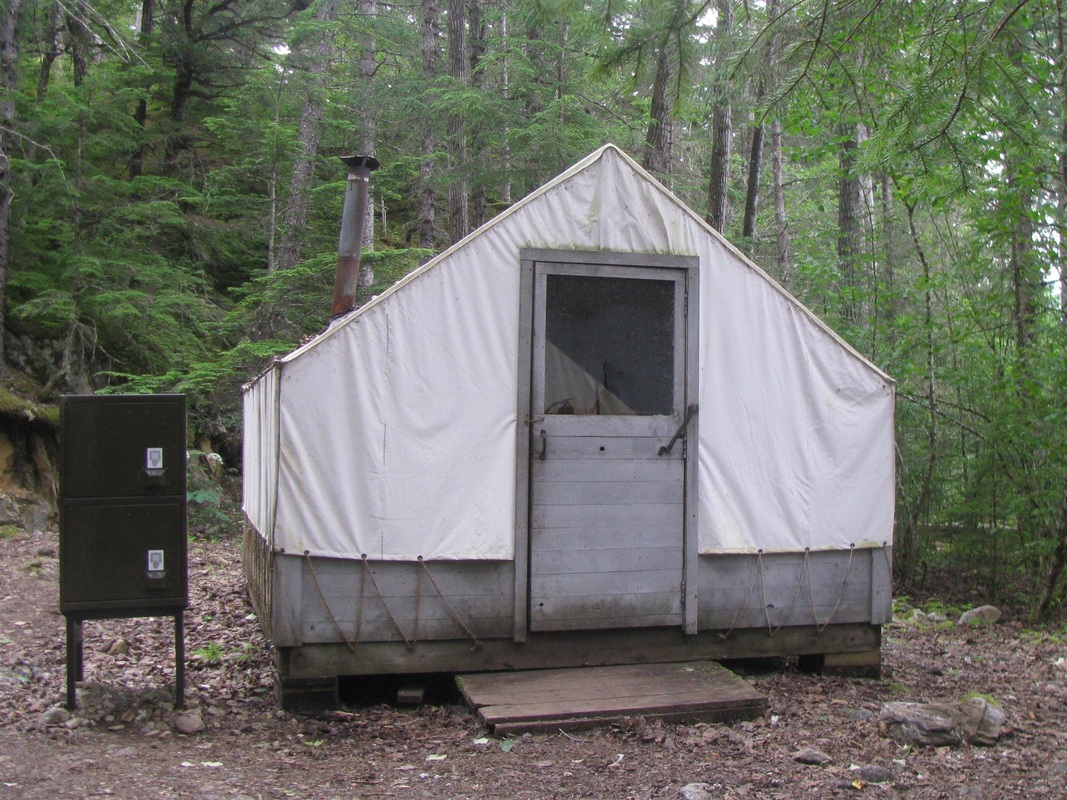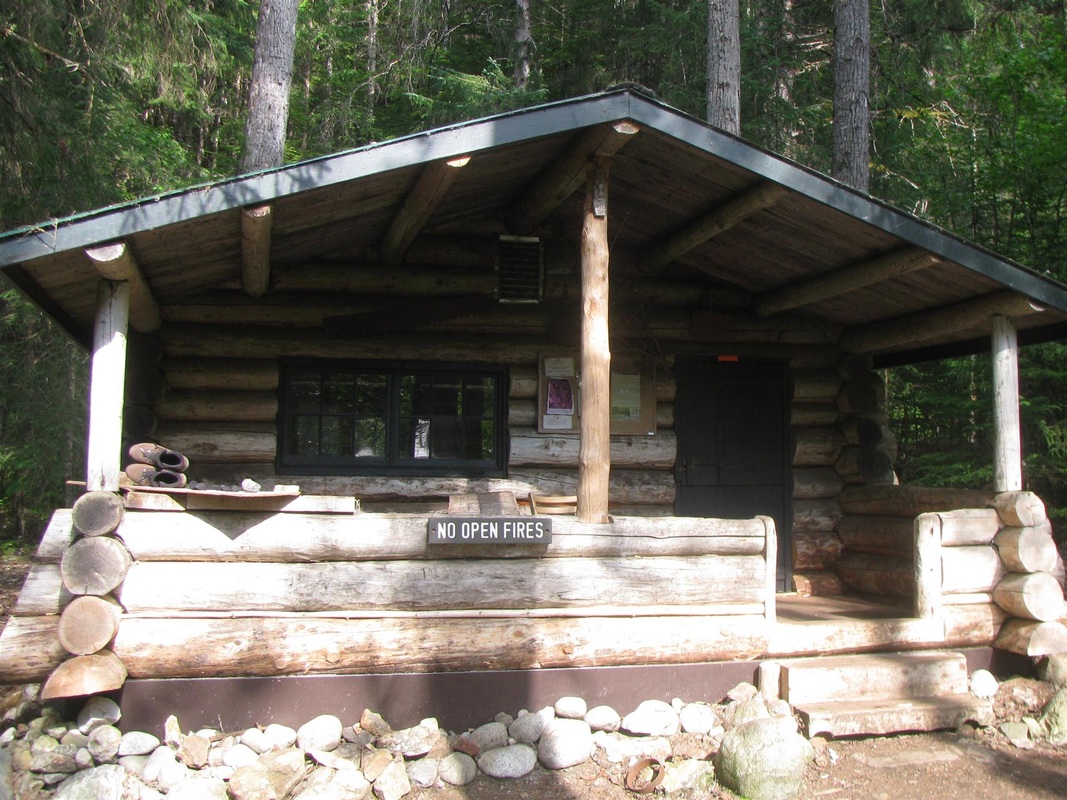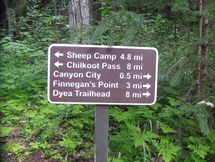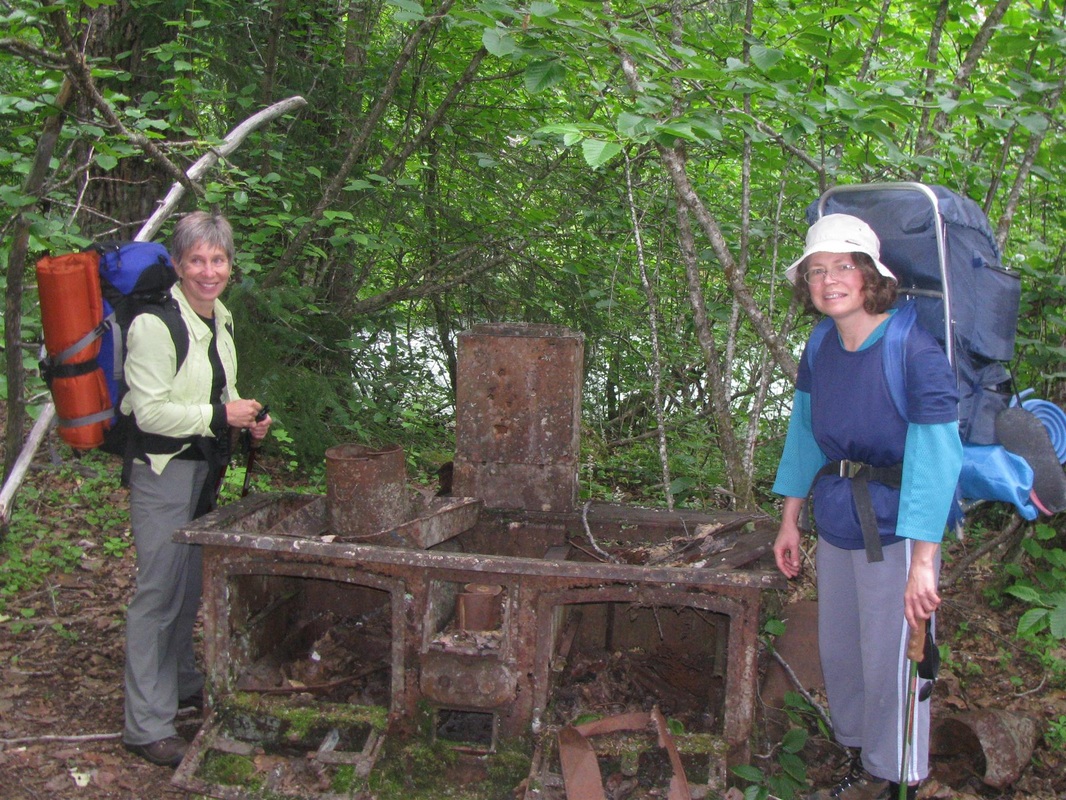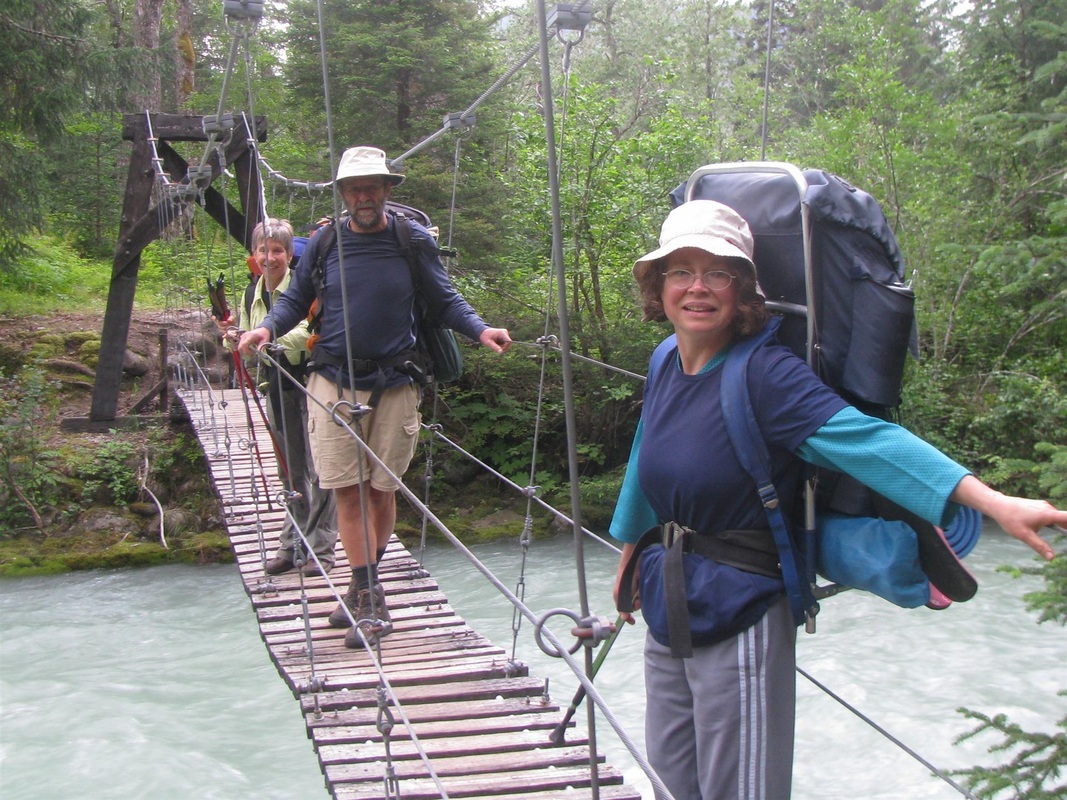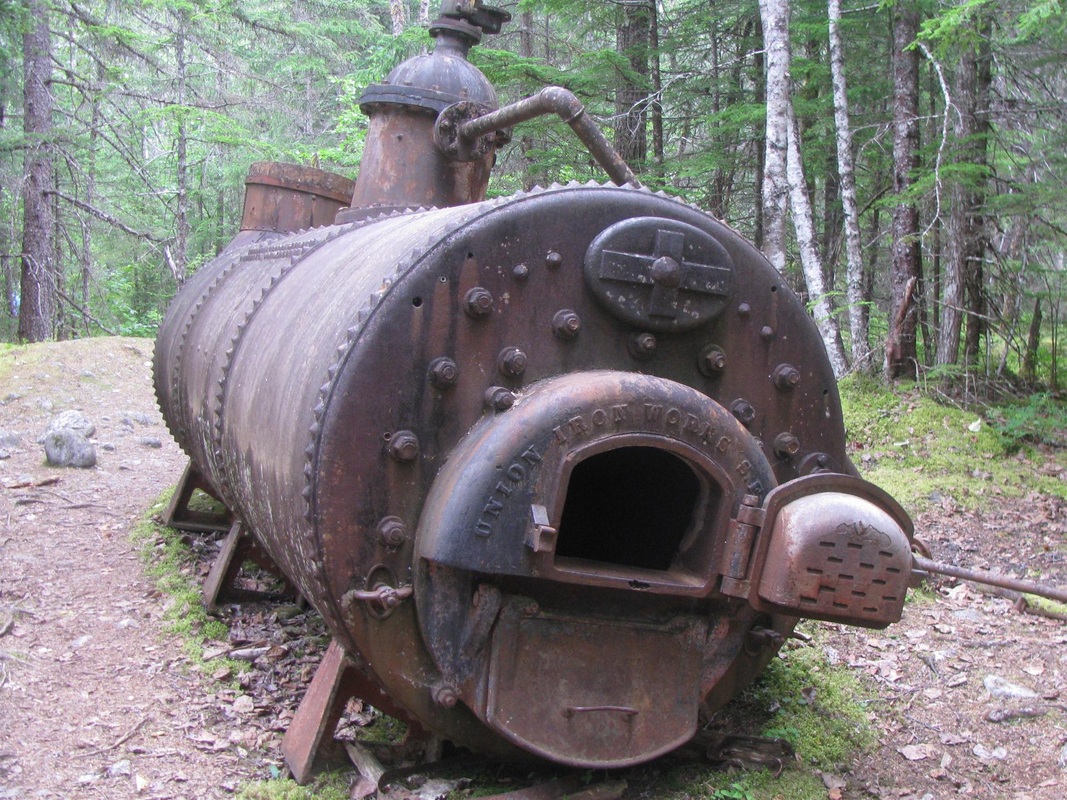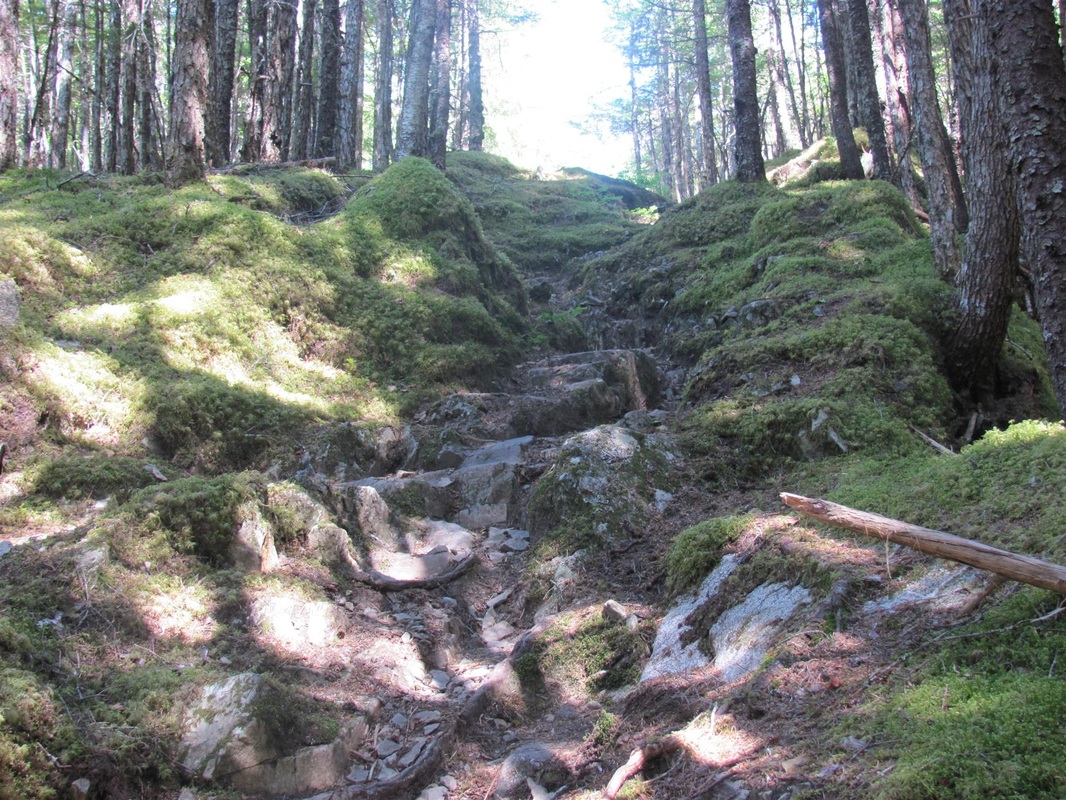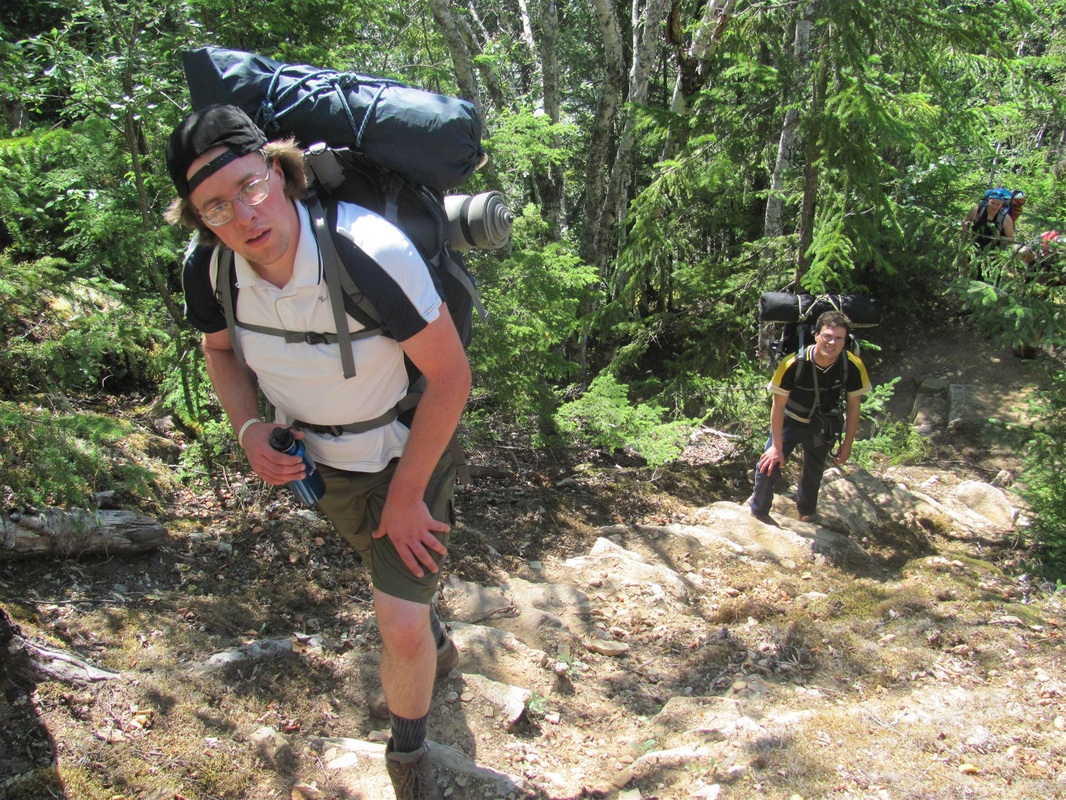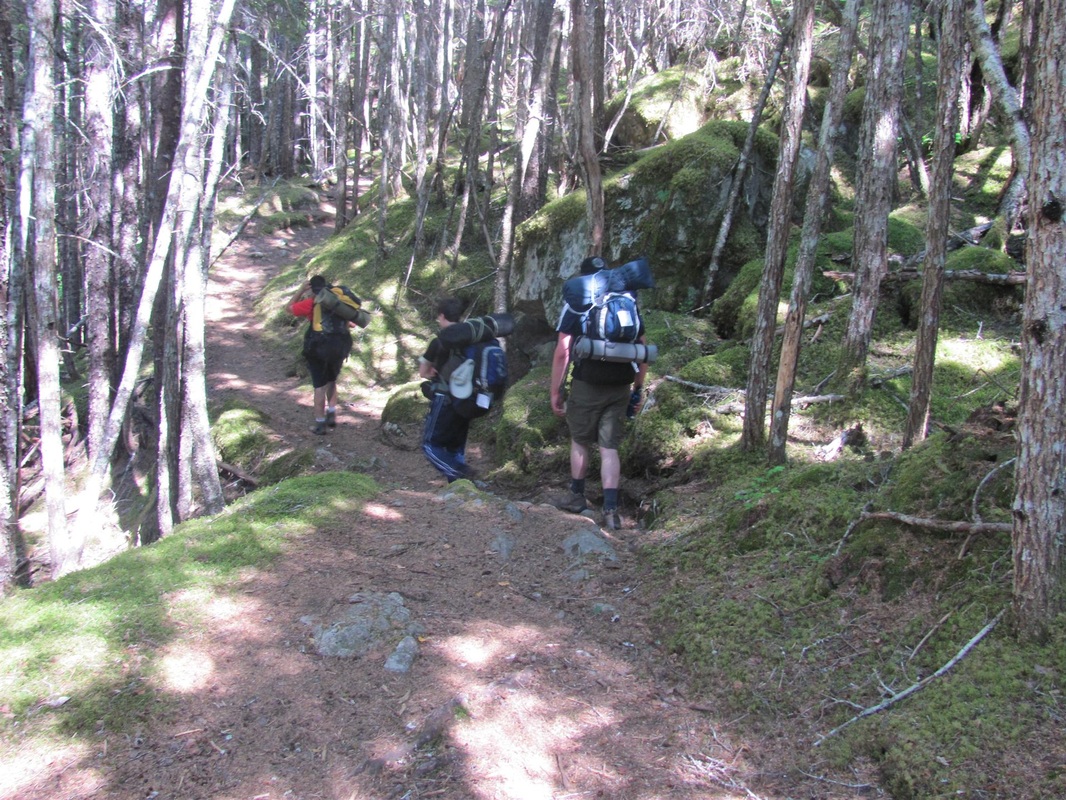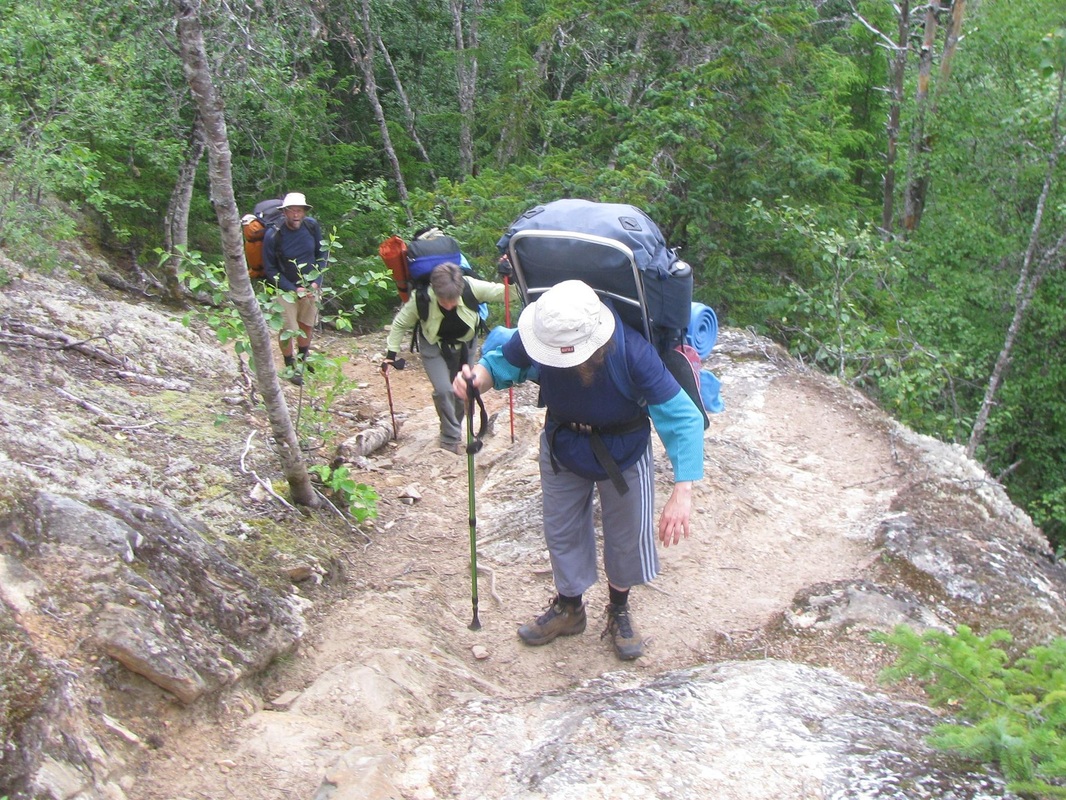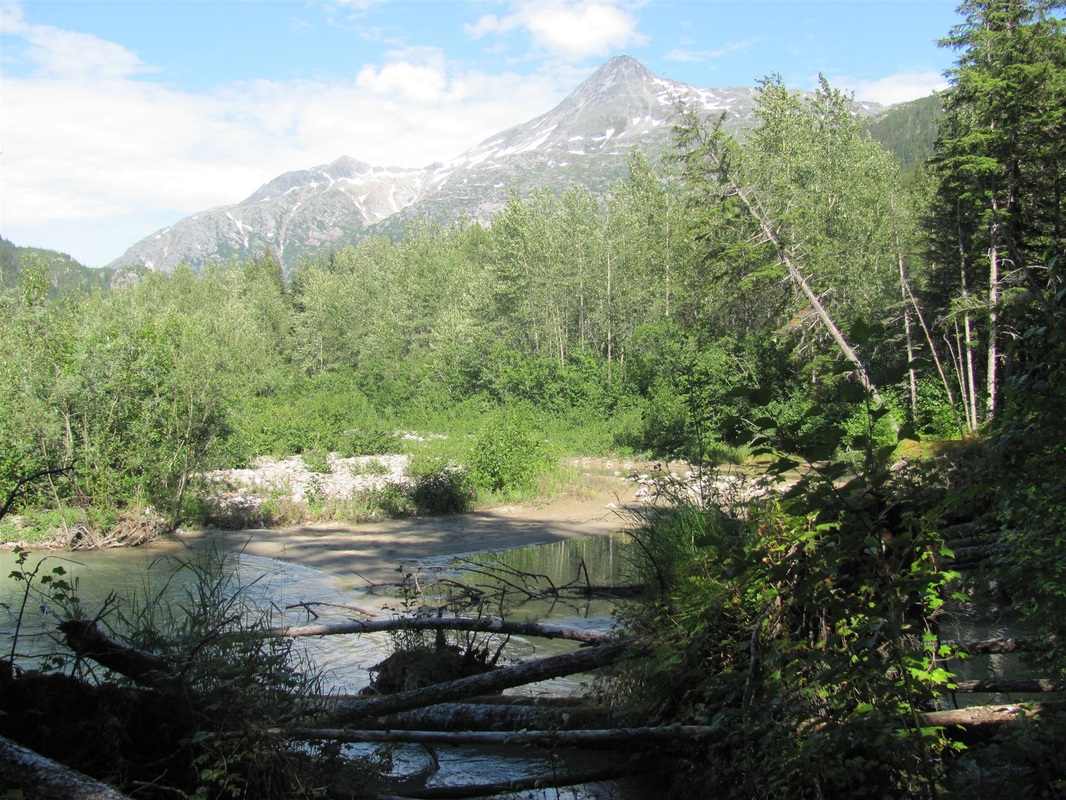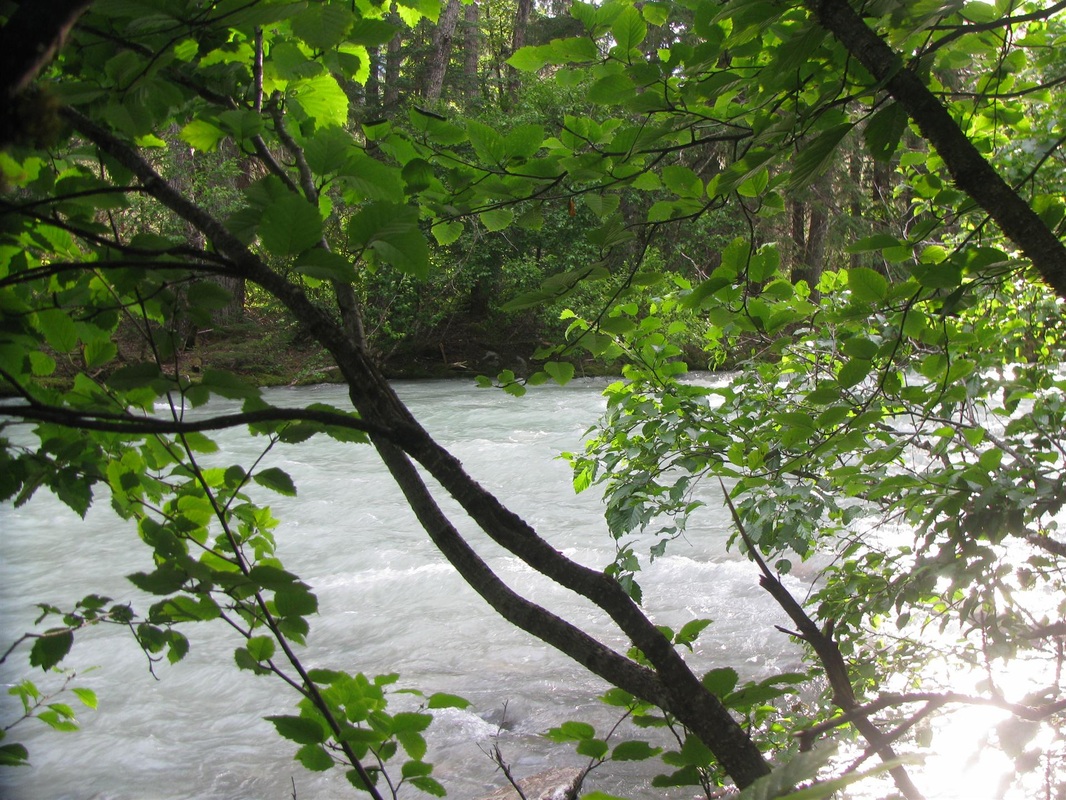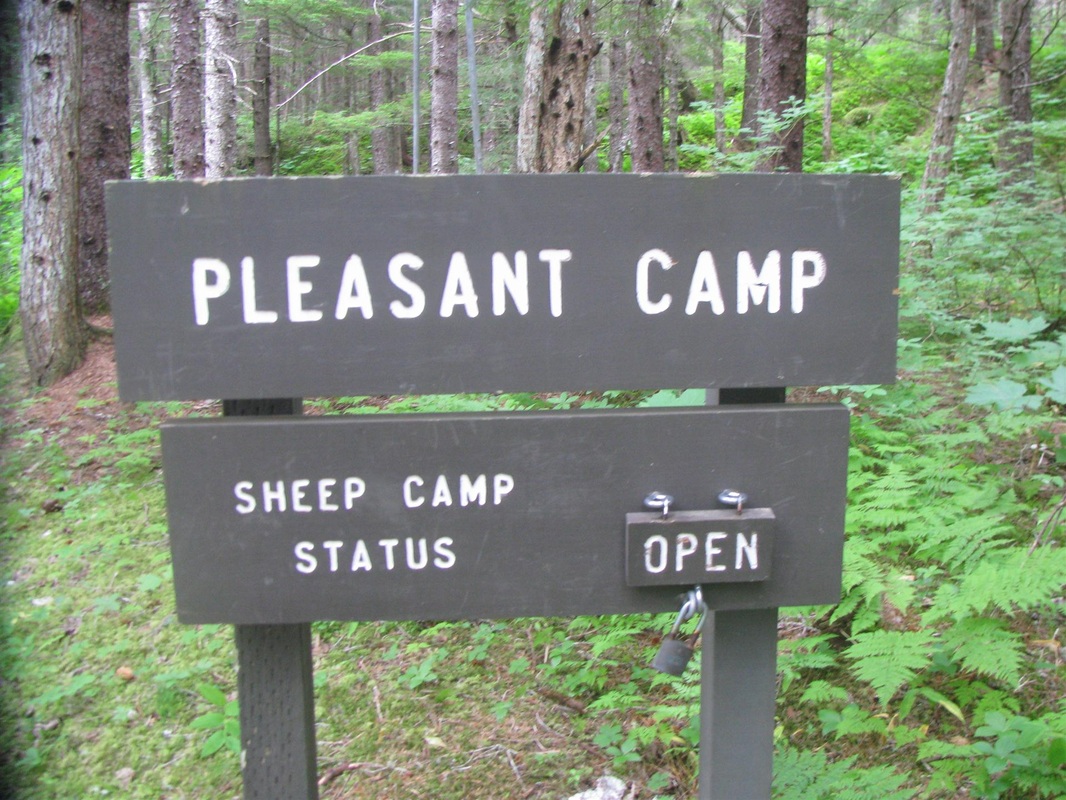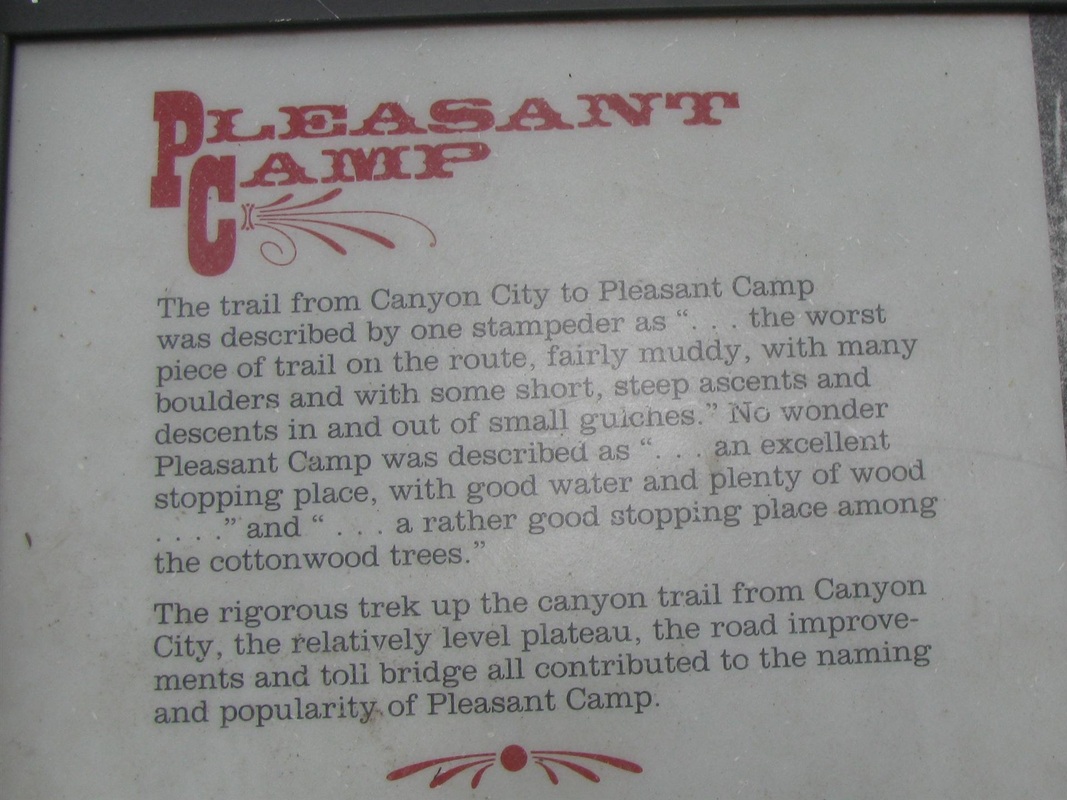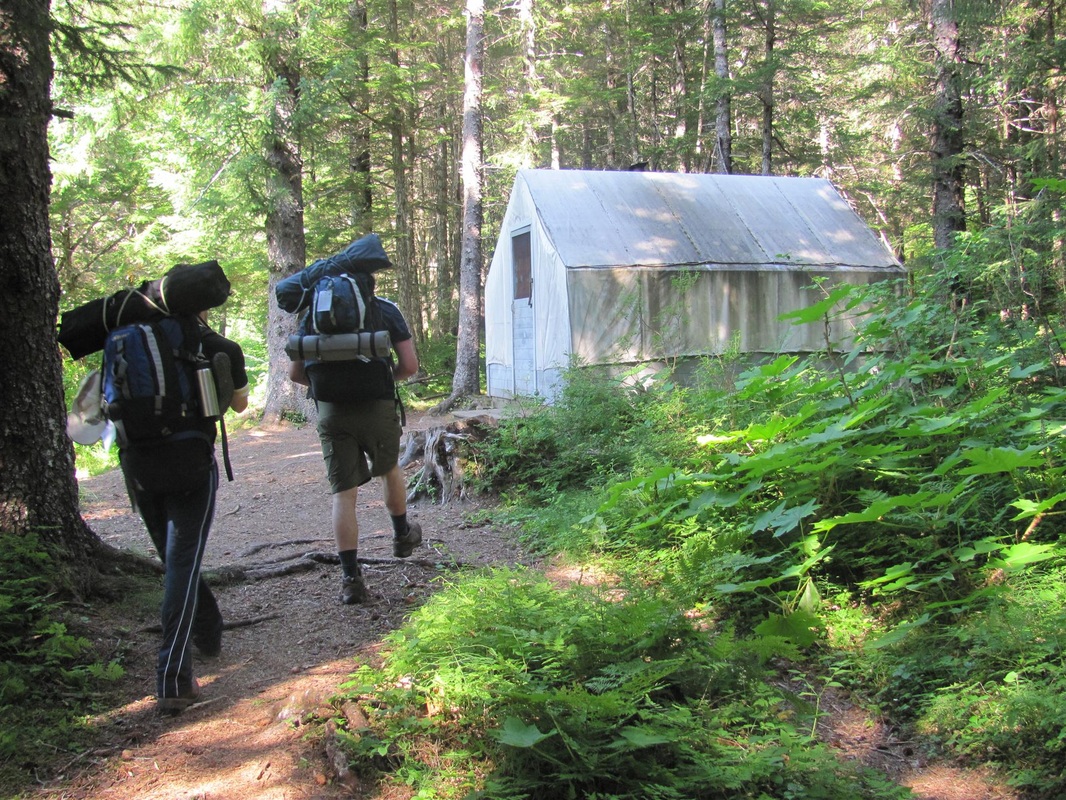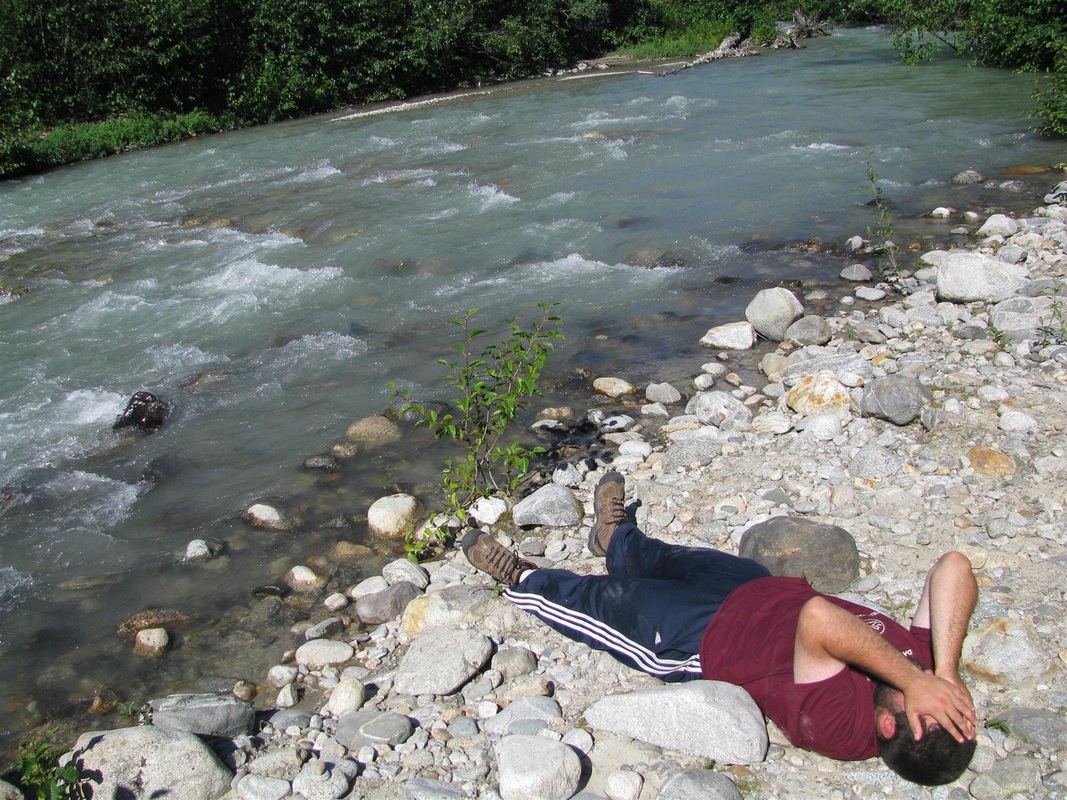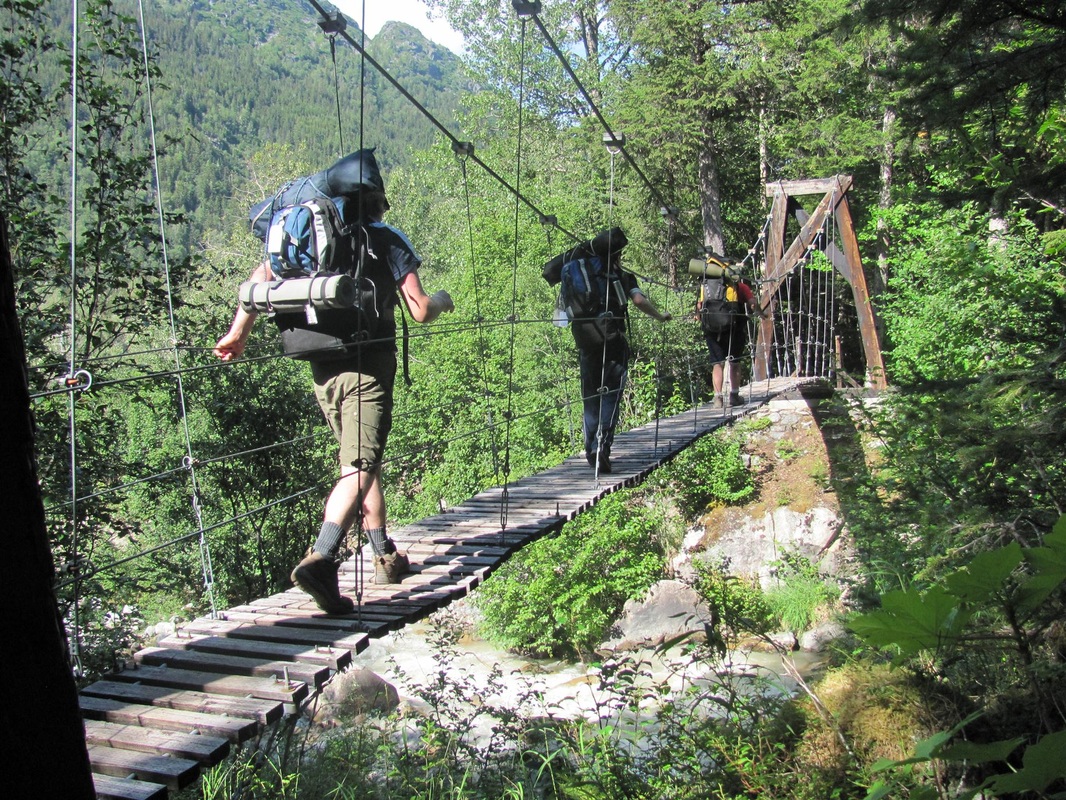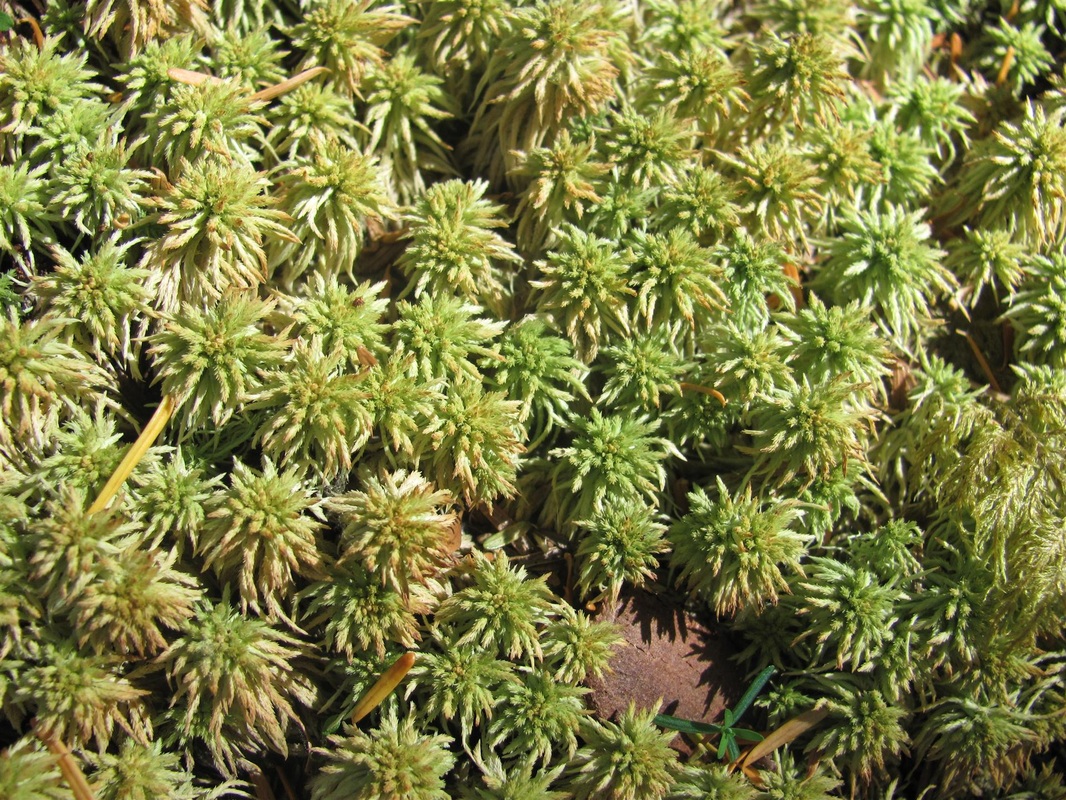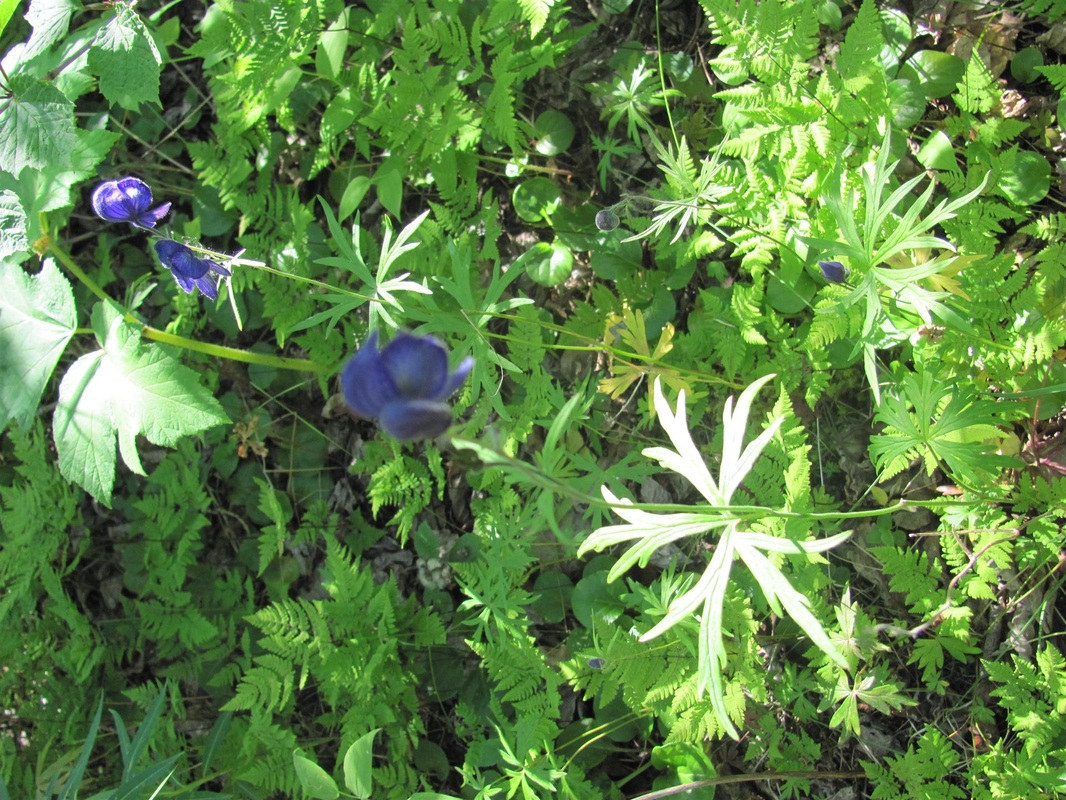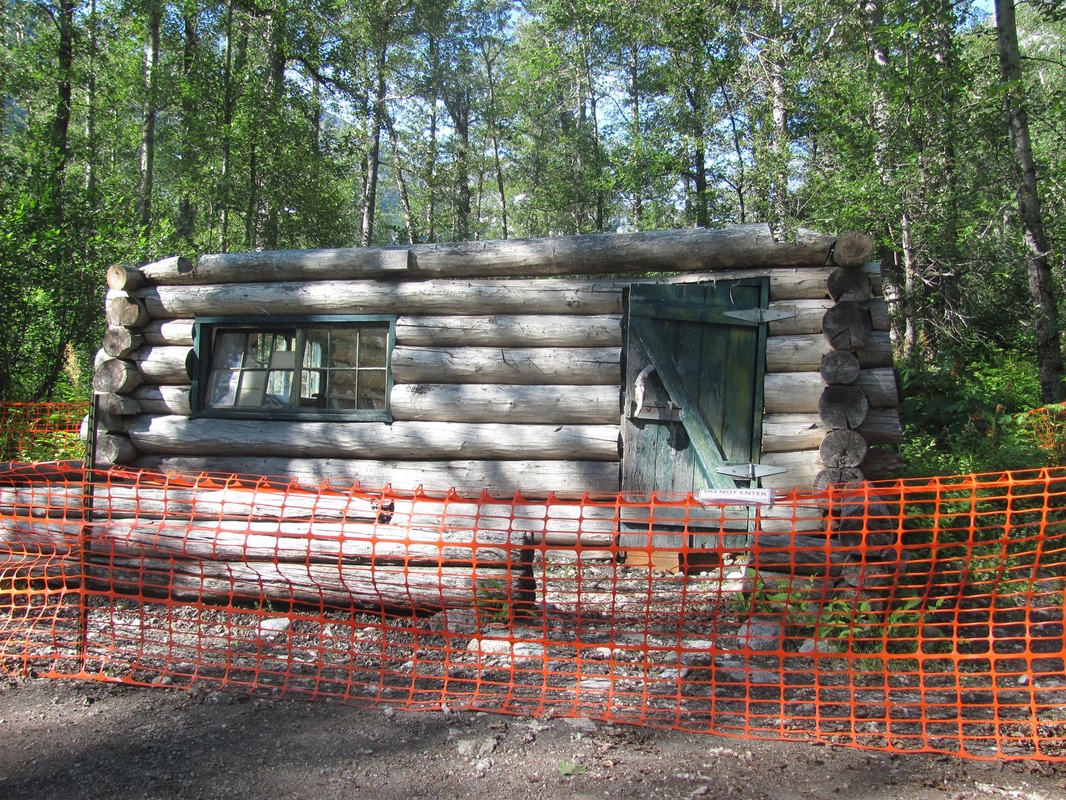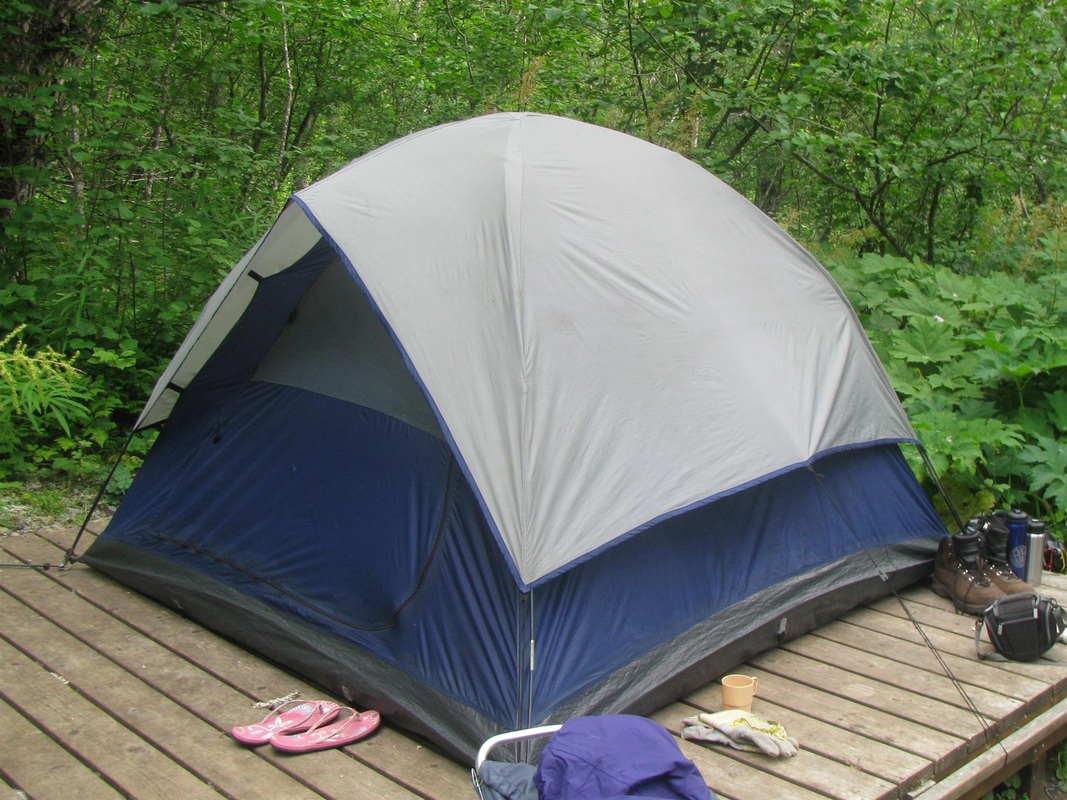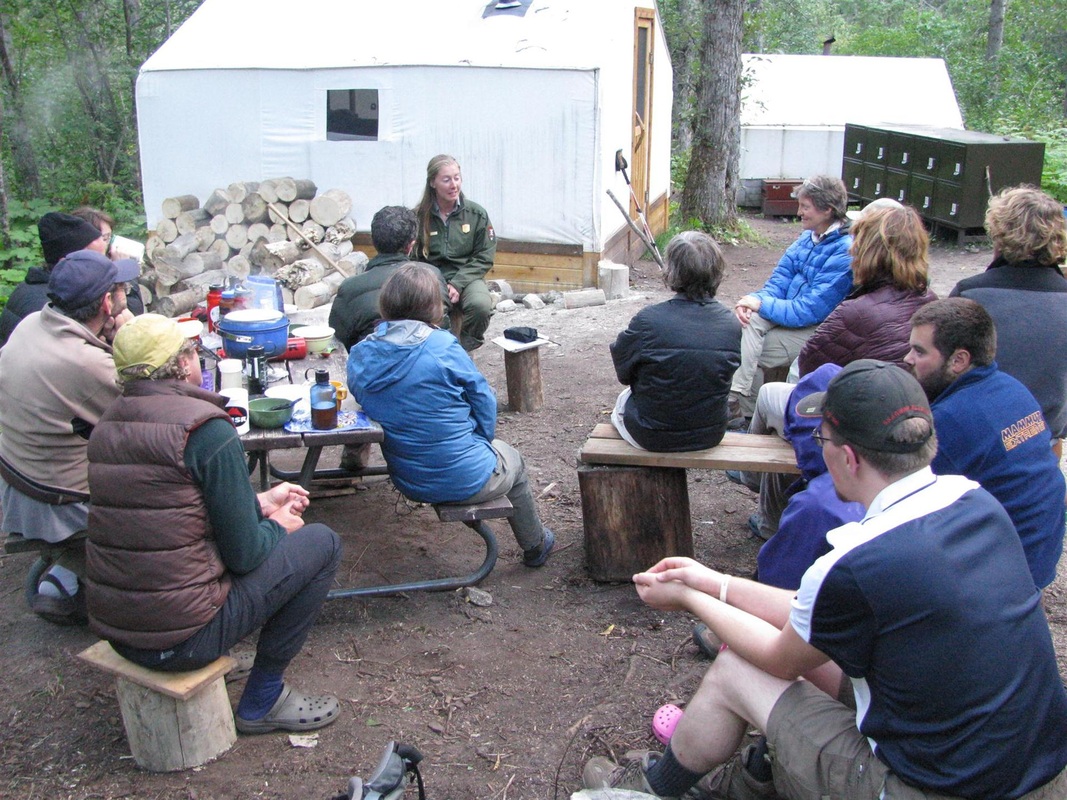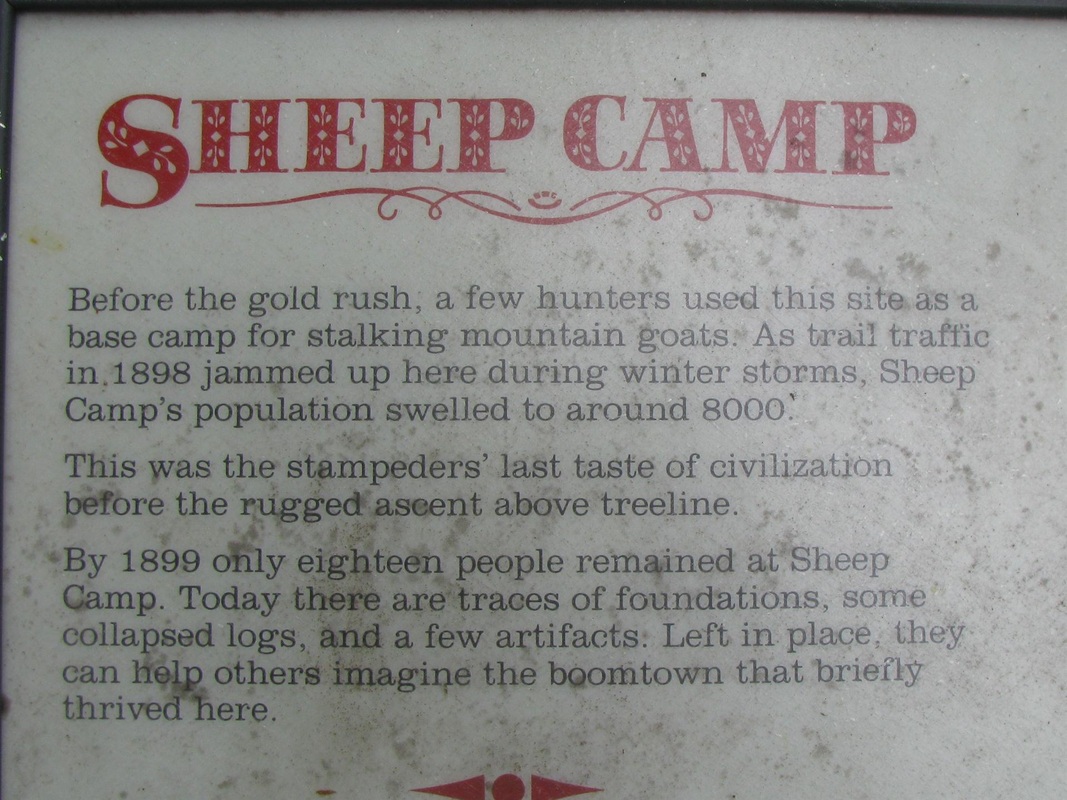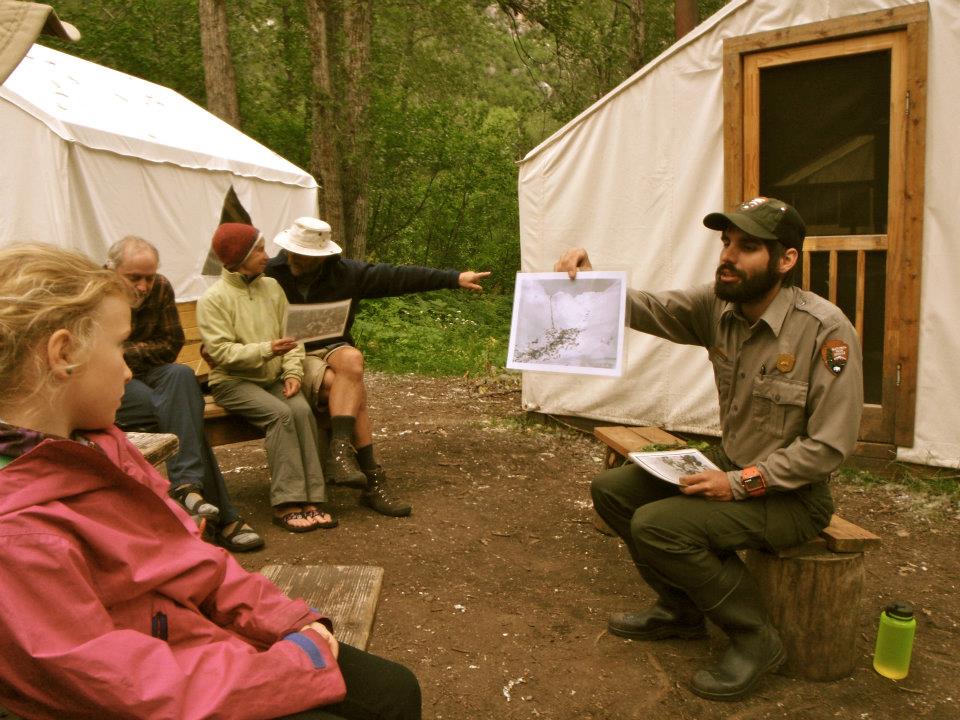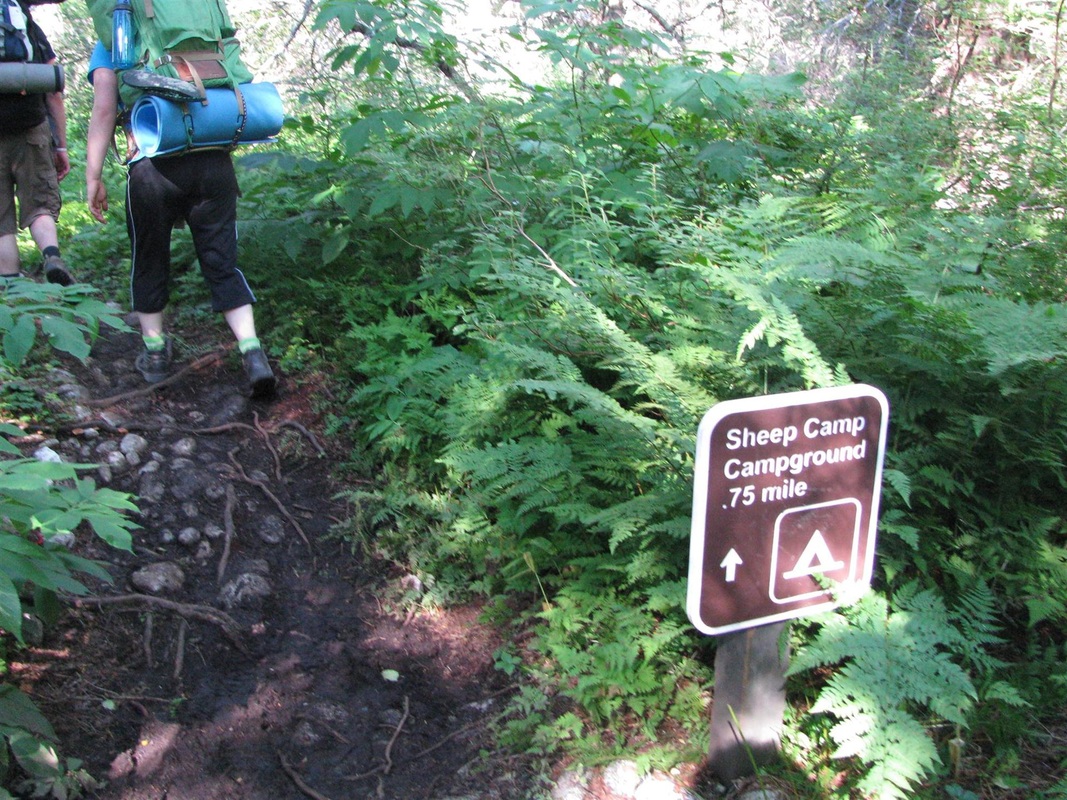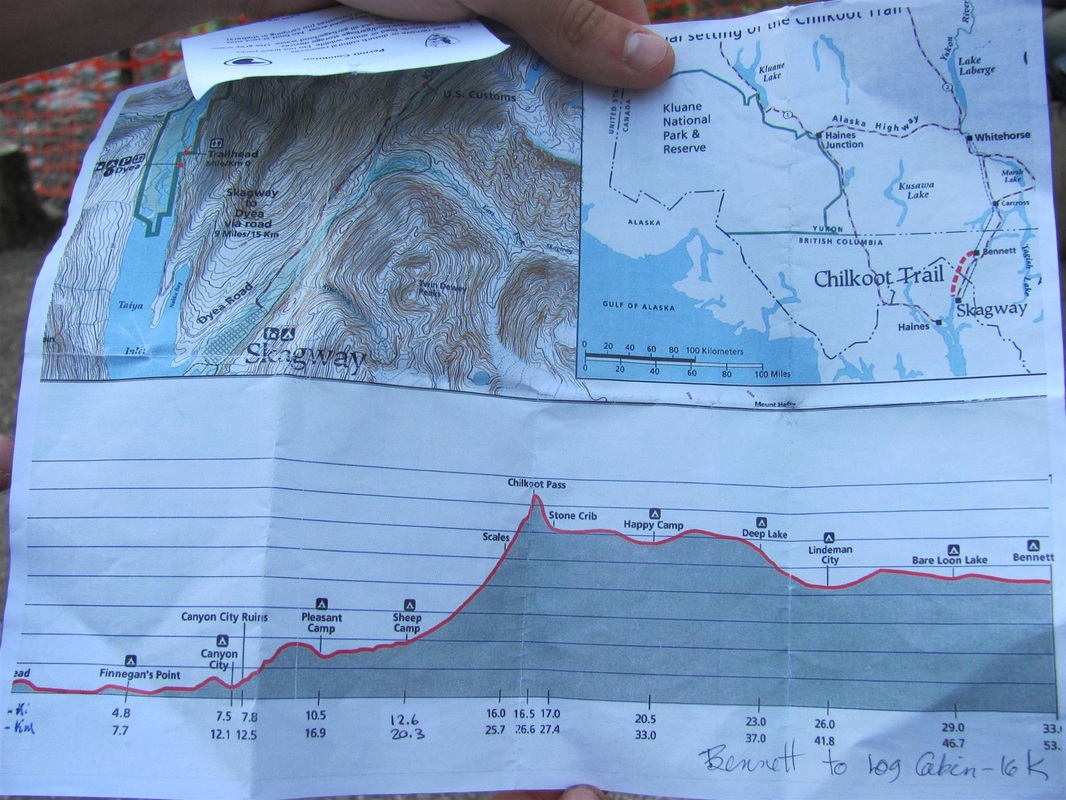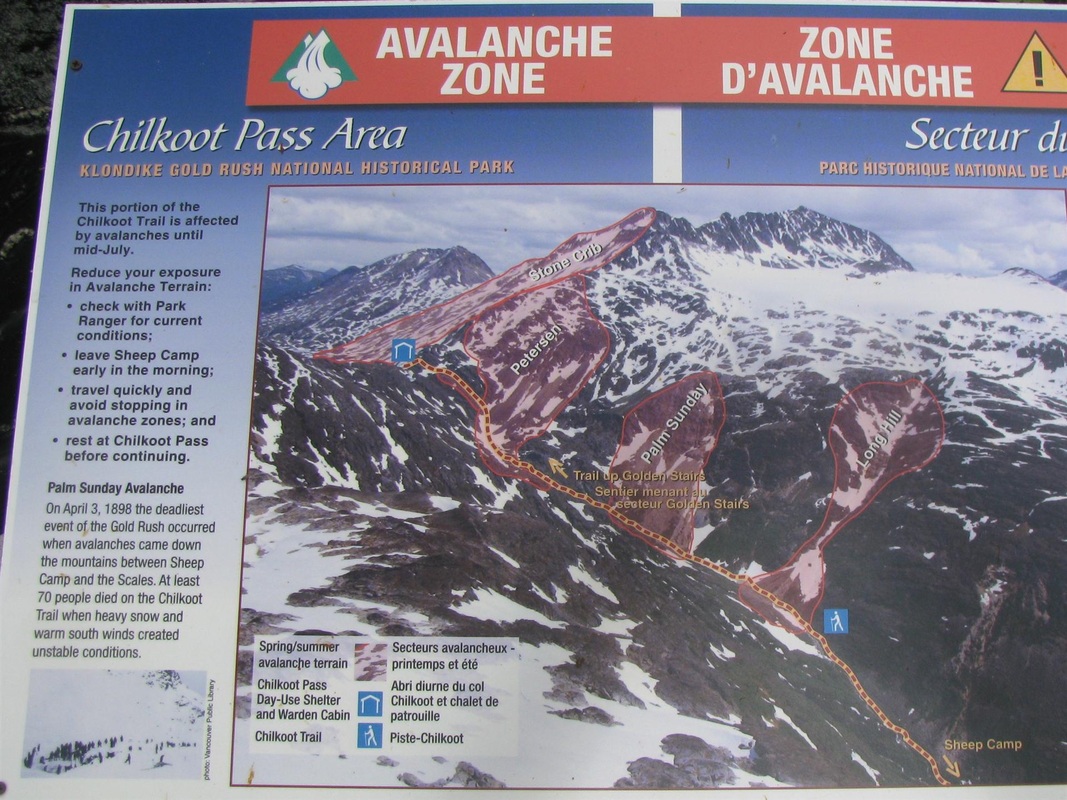Dyea to Sheep Camp (overview)
This first part of the hike (Dyea to Sheep Camp) can be done in one or two days. It will take approximately 7-8 hours.
Along the way you will come to Finnegan's Point, Canyon City, Pleasant Camp, and finally Sheep Camp. If you start early enough, you can easily hike from Dyea to Sheep Camp in one day. For the average person without an special training, it will probably take about 8 hours, including breaks. Many people do this section in a day. However, if you start at noon or later, you might want to stop at Canyon City for the night. This will mean that your second day will be very easy. It is highly recommended that everyone spend a night at Sheep Camp - so that you get an early start towards the summit - but more about that later. Each night at Sheep Camp, there is a Ranger Talk at 7 pm (Alaska time). |
Trail Head (Dyea) to Finnegan's Point
|
You are greeted at the trail head with a nice sign, showing exactly where to begin! From this sign it is a very short walk to the start of the trail where you are faced with a bit of a hill right at the beginning.
I am convinced that the trail was put over this hill just so that tourists didn't think that the hike was a walk in the park and try to do it unprepared. In the big scheme of things, it's not a very difficult hill, but when you are just starting and aren't warmed up, it can be a little annoying. This is also when our backpacks usually get final adjustments made. |
Once you are over the hill (literally) you cross fairly flat ground. Flat is good - except when it is flooded. On some hikes we've had to walk over muddy trail in the early section and an other hikes we've had to walk, knee deep, through flooded areas. As the years go by, the Parks Service seems to be improving the trail and there are less and less areas of flooding (more bridges and boardwalks). On my last two hikes, I have not had to wade through water. However, that is not to say you won't need to walk through water on your hike - it is entirely possible and you should be prepared.
|
After that hill, the potentially flooded areas, and the boardwalk you come to a nice wide trail (an old "road"). This is probably the easiest section of the hike. Along this portion, you'll pass along 1.4 miles of private land (and asked to not go wandering off the trail).
Along the way you'll come across some historic remains. These are always to be left alone. You'll find some vehicle parts and an old cabin (that doesn't have much left to it). |
|
After approximately two hours, you'll get to the first camp at Finnegan's Point. Each camp you come to will usually have at least one outhouse, a cook shelter, and some bear proof containers (to put your food in overnight).
At Finnegan's there is a huge tree with roots showing all over the place. We often take a short break under that tree. Few people camp here overnight; perhaps only those who had a very late start in the day. Even from here, it is an easy day to Sheep Camp the next morning. |
Finnegan's Point to Canyon City
|
Once you leave Finnegan's Point, you are still in the lovely rain forest, but not for long; the terrain does start to change. The path is still fairly comfortable on towards Canyon City with several wide and flat areas. These flat areas should be enjoyed because they will be few and far between in short order.
|
|
Approximately two or two and a half hours after leaving Finnegan's Point you'll arrive at Canyon City. You'll be greeted by the soon-to-be-familiar shelters and cabins along the trail. If the weather is nice, you might wonder why someone bothered to put these here. If the weather is like is usually is on the U.S. side of the summit, you will be extremely grateful to have these shelters. It is not unusual to be in the rain.
At Canyon City there is a very lovely clean and cool stream flowing right by the camp. Plenty of good drinking water here. The familiar bear boxes will always be a welcome sight as you would otherwise have to hang your food on a bear pole - not a very fun task. |
|
Even though you are at Canyon City, you are not actually at the historic Canyon City. That is still about an optional 1/4 mile hike away. If you stopped overnight at Canyon City, you might want to take a walk over to the Historic site after supper, or you can head over there the next morning on your way to sheep camp. The turn off to the historic site is shortly after Canyon City. To get to the historic site, you'll need to cross a very rickety suspension bridge.
The two main things you'll see at the historic site are an old cook stove and an old boiler. The boiler was used to power the steam engine that ran a tramway for taking supplies up to the summit.
|
Canyon City to Pleasant Camp
|
Canyon City to Pleasant Camp is not long; perhaps a two hour hike; but it is a rude awakening to the nice hike we've had since the first hill near the trail head. This portion of the hike has lots of ups and downs, twists and turns, roots and rocks. You go up, only to come down, and then go up again.
Once again, the weather has a lot to do with your experience on this part of the trail. Dry paths are much easier than muddy ones! You'll be very glad when you get to Pleasant Camp! |
The road to Pleasant Camp is also very beautiful; lots of nice scenery along the way. You get a good view (on a clear day) of the mountains.
|
When you are approaching Pleasant Camp you'll see a sign indicating that you are there, but you're not really quite there. You're at the place that was once called Pleasant Camp, but the camp site is still a ten minute hike away, so hang in there!
Once at Pleasant Camp you'll enjoy the Taiya River running right along side. If it's hot and sunny out, you might even enjoy a walk into the river, or a snooze along the sandy bank. |
Pleasant Camp to Sheep Camp
|
Pleasant Camp to Sheep Camp is an easy one hour hike. But like Pleasant Camp, Sheep Camp has moved around over the years. Originally it was closer to the summit, then it was moved closer to Pleasant Camp, then when the "new" Sheep Camp started getting flooded by the Taiya River, it was moved back to the original location closer to the summit.
The path to Sheep Camp includes a suspension bridge. Unlike the one going to historic Canyon City, this one is not optional. You need to cross it! |
Along the way, you'll need to be sure to check out all the various sorts of vegetation. That is one of the incredible things along this entire trail - the variety of vegetation; from huge trees in the Dyea area rainforest, to the tiny trees near Happy Camp, the wide array of flowers and plants of all shapes and sizes.
|
When you get to Sheep Camp, you'll find the usual shelter. Actually, you'll find three canvas shelters and a virtually fallen down cabin. Obviously the cabin is of no use now; but we did get to use it on previous hikes.
The shelters are intended for cooking, warming up, and sometimes even rubbing sore feet. One other thing you'll enjoy at Sheep Camp (as with all camps, with the exception of Canyon City) are the platforms for setting your tent up on. These are also a fairly new addition (these started showing up around 2002 or so - first with a few here and there, and then more). These platforms are great in they keep your tent off the wet ground - they also give you a place to sit and hang your feed down off the side! If the weather is good, you can lay down outside on the platform!
One of the reasons why you'll want to get to Sheep Camp early is so that you can take in the Ranger talk at 7 pm (Alaska time). The Ranger talks about the trail conditions; why it's important to get an early start in the morning, avalanche warnings, etc., and then talks about the history of the Klondike Gold Rush. It's always an informative and fun way to top of the evening. Besides that, you get to meet the Ranger. These are important people. They are watching out for you. The next day could be easy, but it could be incredibly difficult as well; it all depends on your physical condition, the weather, and the weight upon your back. The Rangers are there to see that you make it up and over the summit. They won't help you unless there is an injury or serious problem, but it's great to know they are actually keeping tabs on all the hikers; at least over the summit. Once you get to the summit, the Canadian Park Wardens will be greeting you.
|
